Painted furniture continues to dominate home decor trends in 2025, offering endless possibilities to transform ordinary pieces into stunning statement items. The search term "hand painted furniture" experienced a 135 percent uptick on Pinterest between September 2022 and August 2024, demonstrating the growing popularity of this DIY approach. In 2025, painting the entire piece may not be the best plan, with trends favoring soft neutrals over bold bright colors, and dark greens and blues when saturated colors are desired. Whether you're working with family heirlooms, thrift store finds, or modern pieces, these creative painting techniques can breathe new life into any furniture while reflecting your personal style and current design trends.
1. Chalk Painted Furniture Classic Technique

This timeless painted furniture approach offers incredible versatility for beginners and experts alike. Chalk paint has incredible sticking power and will go onto almost any surface, even varnished pine or laminate, without sanding or priming first. The beauty lies in its forgiving nature—you can apply it thickly for a rustic, textured look or smoothly for a sleek modern appearance. Once you're happy with the paintwork, seal it with Chalk Paint Wax for indoor use or Chalk Paint Lacquer for high traffic areas. This painted furniture method works exceptionally well on dressers, cabinets, and nightstands, creating that coveted matte, velvety finish that's become synonymous with farmhouse and shabby chic aesthetics.
2. Milk Painted Furniture Natural Finish
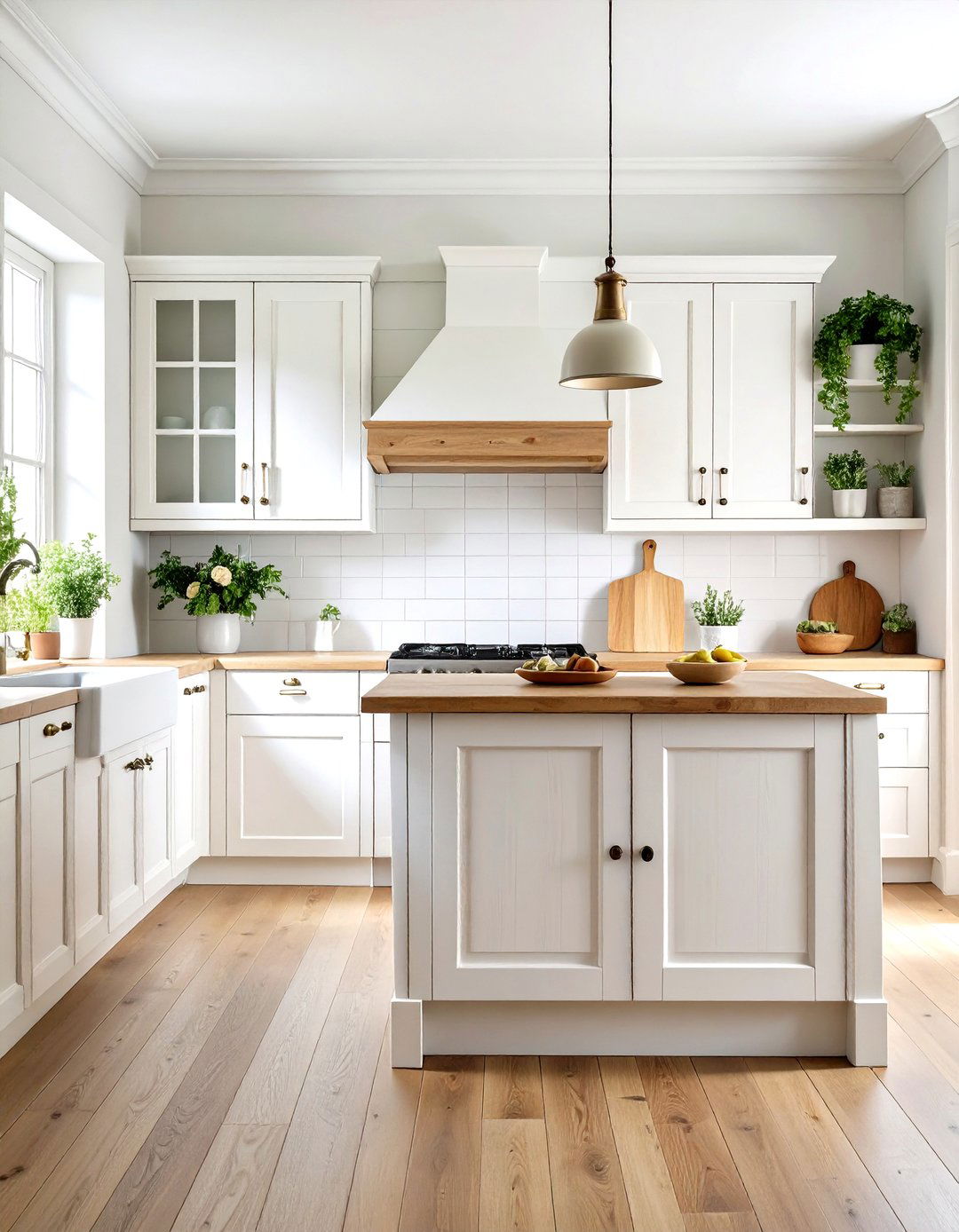
Another exceptional painted furniture option, milk paint provides an eco-friendly alternative that penetrates wood rather than sitting on the surface. Unlike chalk paint, which can have a thicker, chalky texture, milk paint offers a more refined, smooth finish that's perfect for both modern and antique furniture. Since most milk paints come in a powdered form, you need to mix it up with equal parts water and powder and stir it thoroughly. This painted furniture technique naturally chips on raw wood, creating authentic aging effects. It's biodegradable and non-toxic, making it safe for indoor use around kids and pets. The result is furniture with character that appears to have aged gracefully over decades.
3. Ombré Painted Furniture Gradient Effect
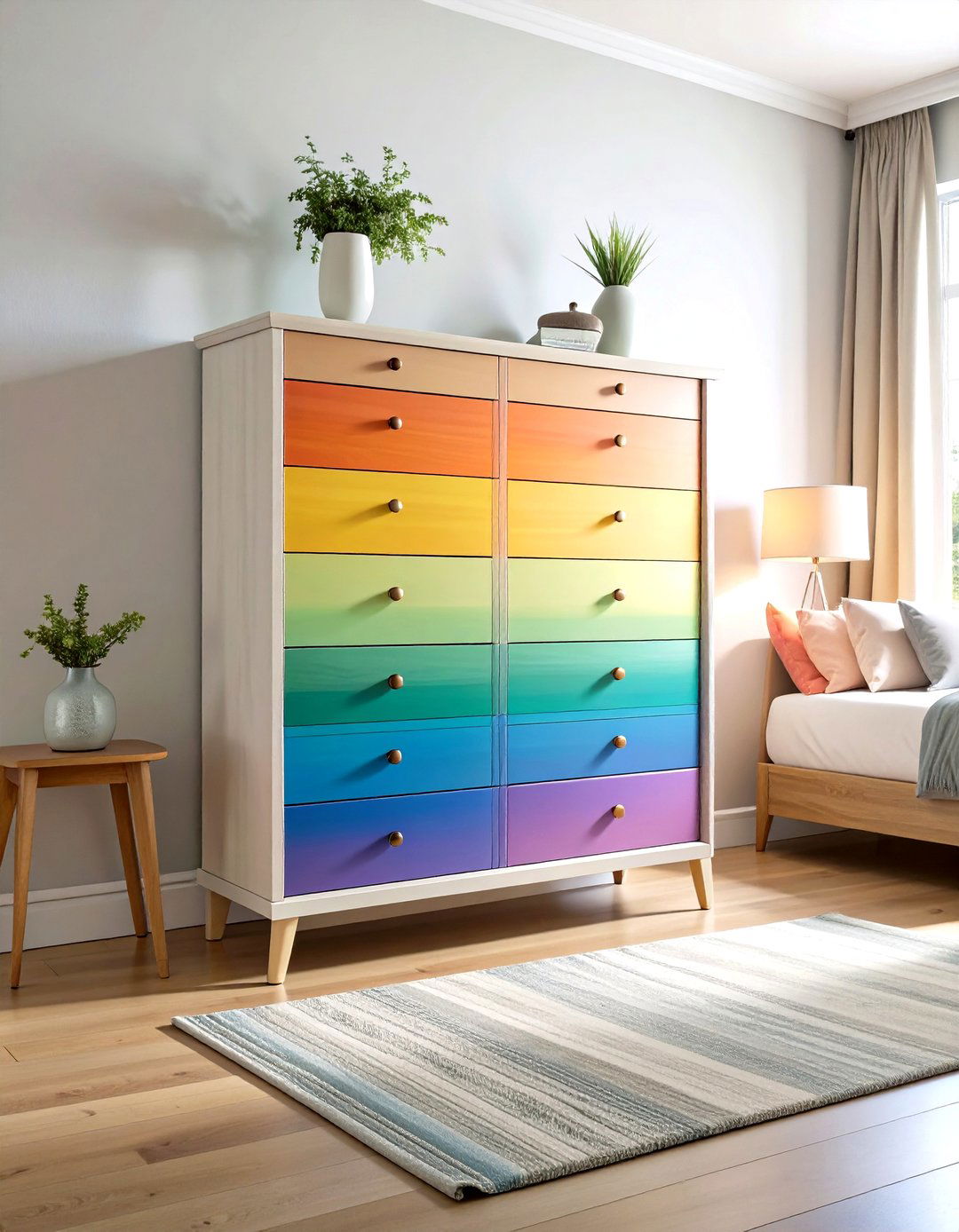
Create stunning visual impact with this sophisticated painted furniture technique that blends colors seamlessly from light to dark. Select colors from the same paint strip and use the lightest on the top drawers, the next darkest on the middle, and the darkest on the bottom. When you're trying to create an ombre effect with paint, choose one pale colour and one dark colour, experimenting first by blending color combinations. This painted furniture approach works beautifully on tall dressers with multiple drawers, creating movement and depth. Tall dressers with multiple drawers work best, and look for pieces with drawer fronts that sit flush rather than recessed for the cleanest ombre effect. The gradient creates an artistic focal point that elevates simple furniture pieces.
4. Two-Tone Painted Furniture Color Blocking
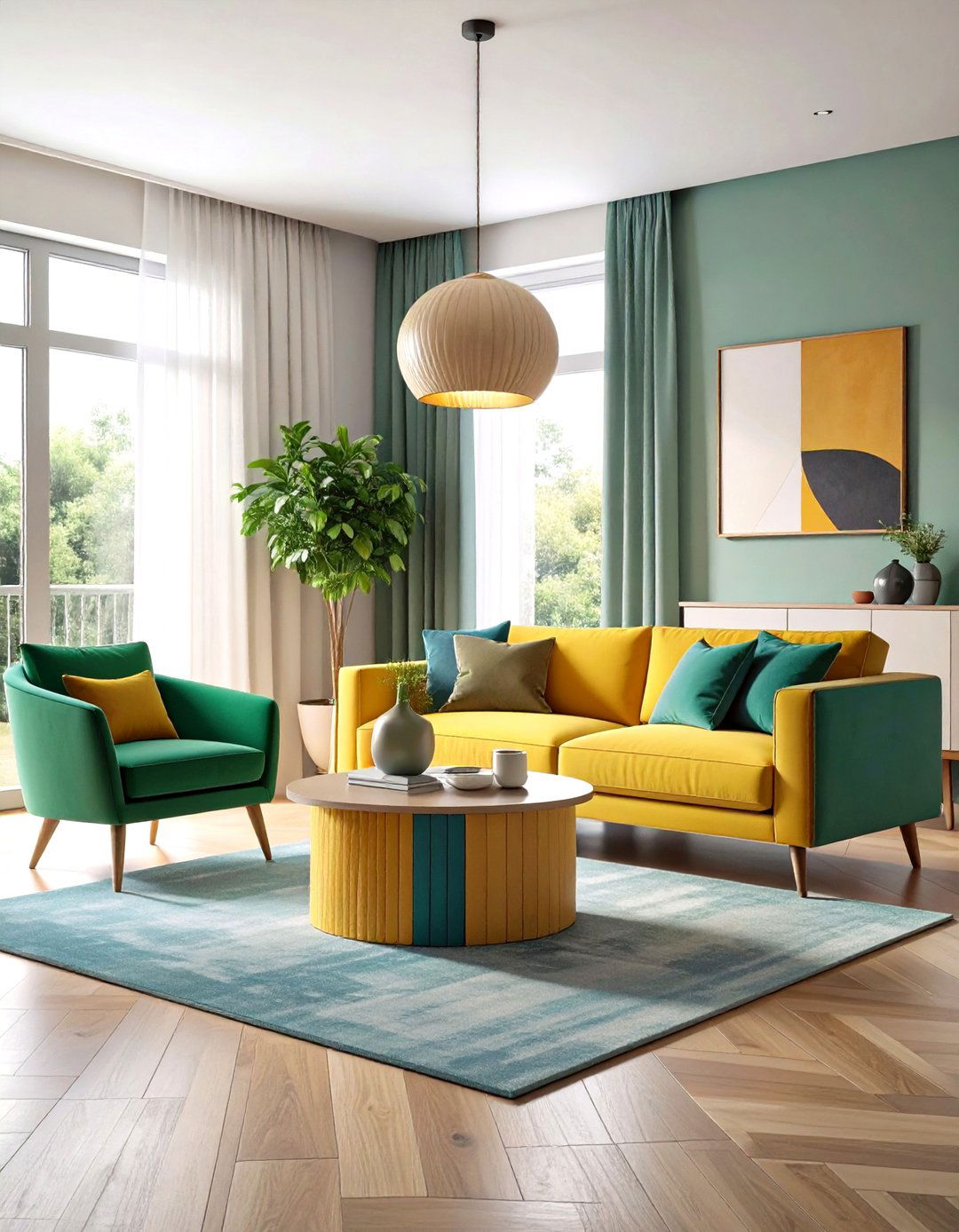
This contemporary painted furniture style combines contrasting colors to create bold, modern statements. Two-tone furniture is popular for its ability to add depth and visual interest through contrast colors or finishes. To create a crisp two-tone paint line, use an artist's brush and brush on a thin coat of topcoat—this prevents the paint from bleeding under the tape for a perfect line. This painted furniture technique allows you to customize pieces to match your home's aesthetic while creating striking visual divisions. You can divide the furniture piece into distinct sections and paint base coat application, then accent detailing with contrasting colors. Perfect for modern and minimalist interiors, this approach transforms ordinary furniture into designer-worthy pieces.
5. Stenciled Painted Furniture Decorative Patterns
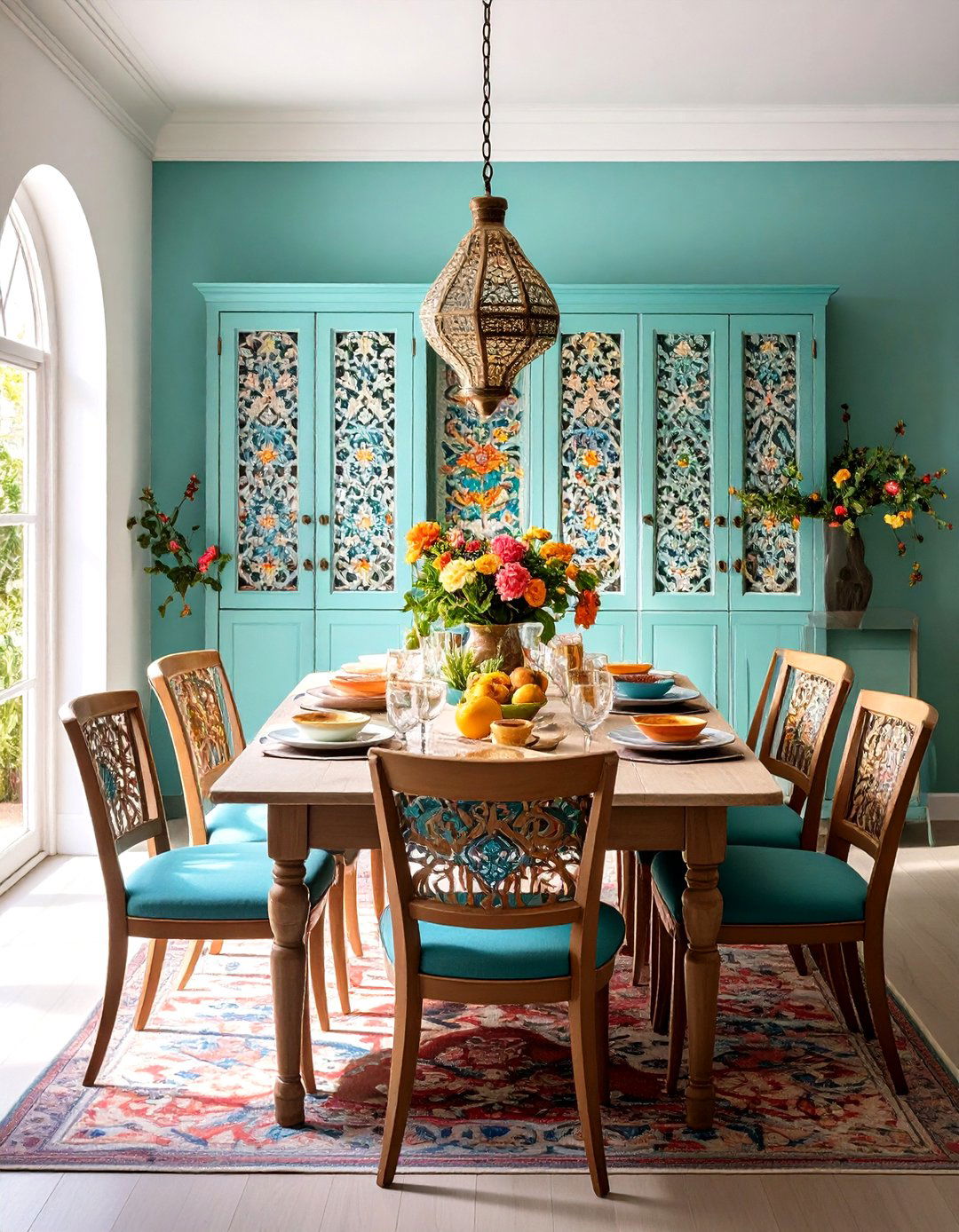
Transform plain painted furniture into artistic masterpieces using decorative stencils that add intricate patterns and designs. Furniture stencils are perfectly sized for small DIY decor projects such as painting a custom furniture design. Furniture stencils and paint allow you to transform plain, old, or tired furniture into something fresh and unique. This painted furniture method works exceptionally well on flat surfaces like dresser tops, cabinet doors, and headboards. There are thousands of stencils available, ranging from simple geometric patterns to elaborate floral designs. Whether you choose Moroccan tiles, botanical motifs, or geometric patterns, stenciled painted furniture creates sophisticated focal points that look professionally designed while remaining budget-friendly and completely customizable to your style preferences.
6. Distressed Painted Furniture Vintage Charm
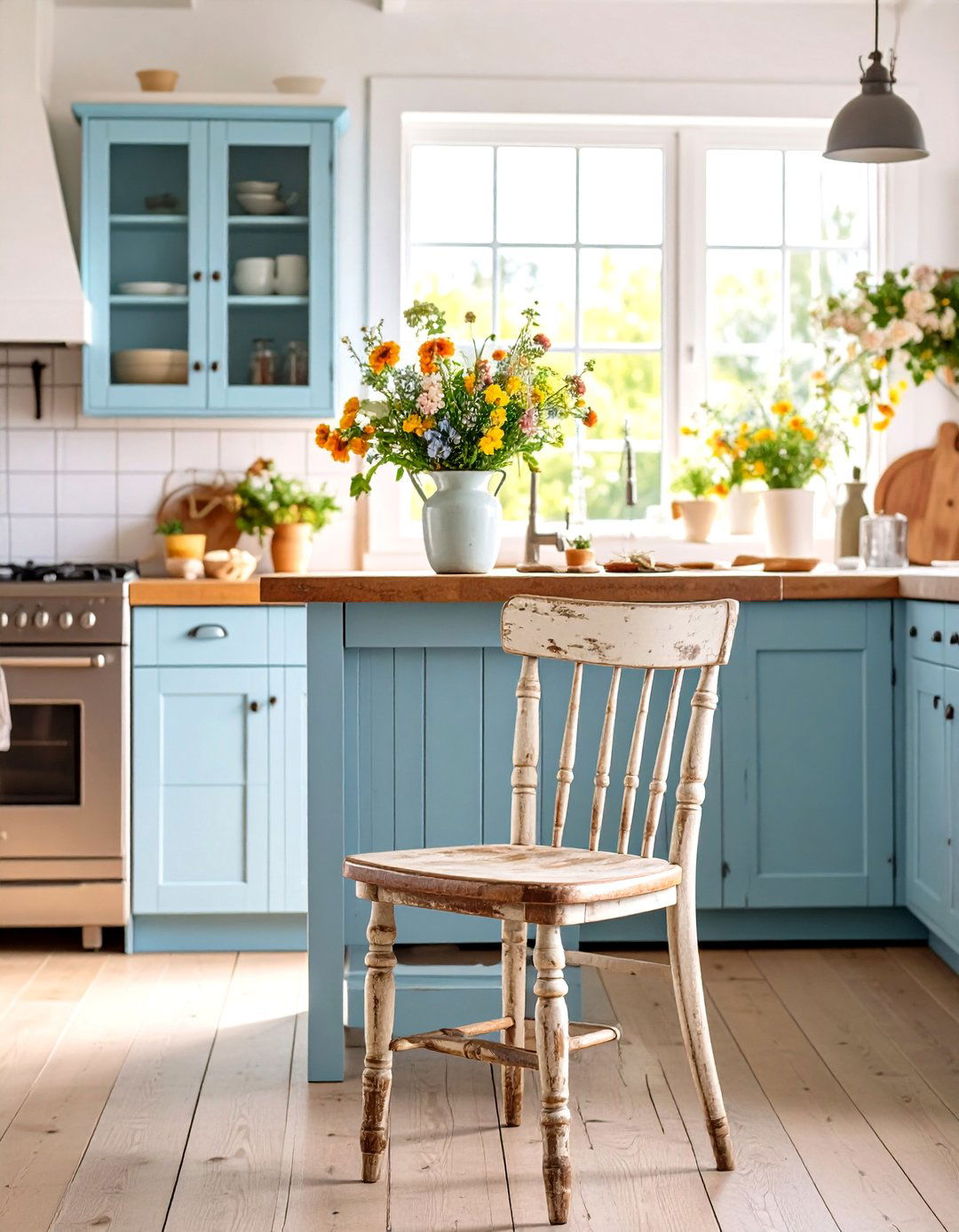
Achieve authentic weathered appeal with this classic painted furniture technique that mimics natural wear and tear over time. Distressing involves sanding off paint layers to expose the underlying wood or base color, producing a worn-out, weathered look. Distressing involves strategically damaging the surface of painted furniture to mimic natural wear and tear, typically including sanding, chipping, and creating marks that would occur over time. This painted furniture approach works particularly well on farmhouse, cottage, and rustic style pieces. Focus distressing on edges, corners, and areas that would naturally receive heavy use. When you reach the distress level you desire, seal the furniture with a clear or wax topcoat. The result is painted furniture that tells a story and adds instant character to any space.
7. Metallic Painted Furniture Glamorous Accents
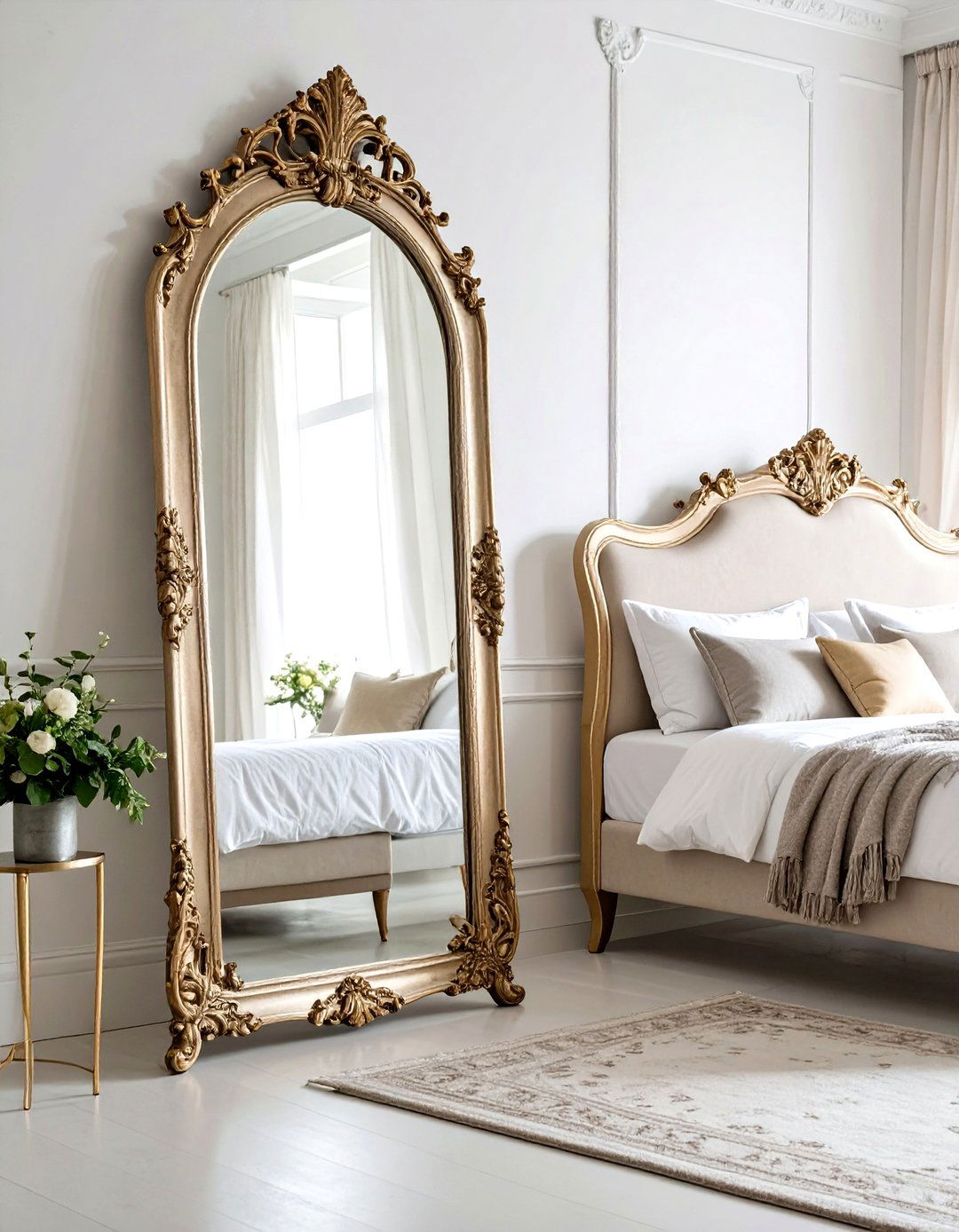
Add sophistication and drama to your pieces with this luxurious painted furniture technique using metallic finishes. Layering different color metallics over each other creates a really sophisticated finish with extra depth by using a dry-brush technique to build up different shades. When brushing on metallic paint, brush in one direction after applying with a roller, being careful not to use back and forth strokes like you would with other paints. This painted furniture method works exceptionally well on ornate pieces with detailed carvings or hardware. Whether you want to paint the chair's legs, handles, or the entire thing, you can be sure that your piece of furniture will look like a million bucks. Gold, bronze, and copper metallics create warm elegance, while silver adds cool sophistication to painted furniture pieces.
8. Crackle Painted Furniture Aged Patina
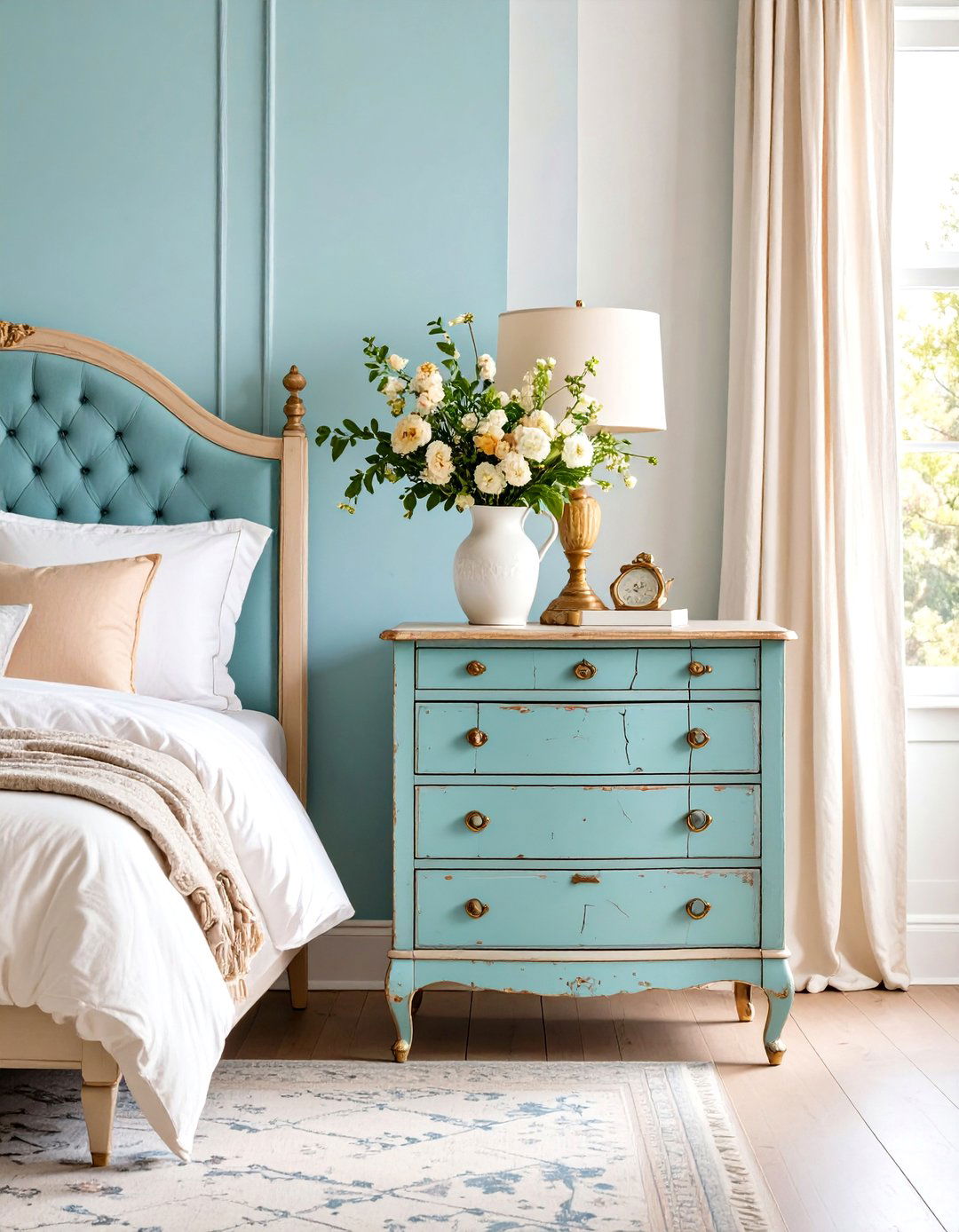
Create the appearance of naturally aged paint with this fascinating painted furniture technique that produces authentic-looking cracks and wear patterns. This method uses a special crackle medium between two contrasting paint colors, resulting in a beautifully distressed appearance. Apply your base color and let it dry completely, brush on the crackle medium according to product instructions, then once the medium becomes tacky, apply your top color in a single pass. This painted furniture approach works beautifully on pieces with flat surfaces where the crackle effect can be fully appreciated. As it dries, the top layer cracks, revealing the color underneath and simulating the aging process of natural materials. The result is painted furniture that appears to have decades of history and character.
9. Limewash Painted Furniture Natural Texture
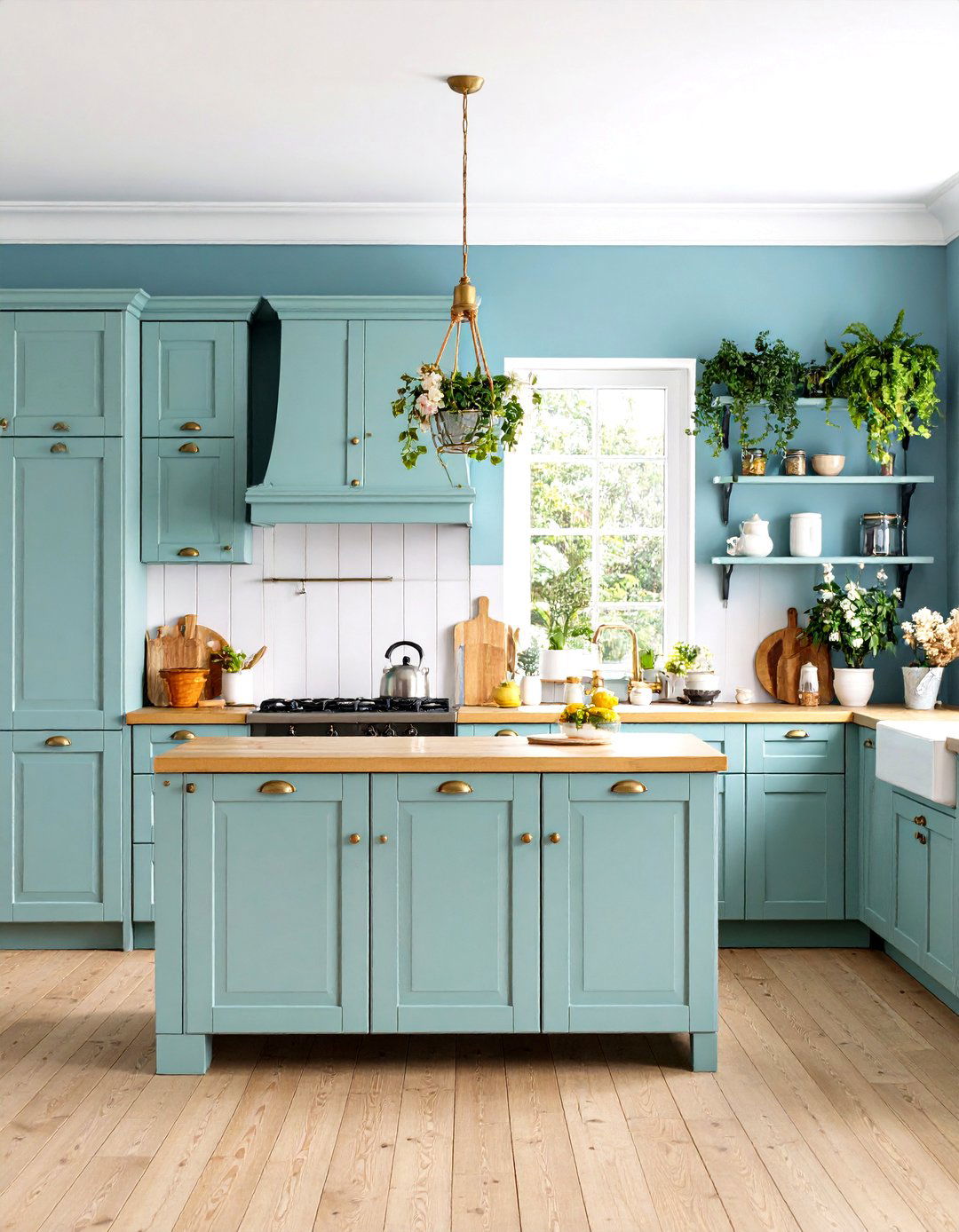
Discover this ancient painted furniture technique that creates soft, cloudy appearances with incredible depth and subtle color variations. Made from crushed limestone that's been mixed with water and sometimes tinted with natural pigments, this ancient finish brings old-world charm to contemporary pieces. Paint with the grain of the wood using random multi-directional patterns—Lime Paint will dry to subtle color nuances with a soft weathered patina. This painted furniture method works particularly well on unfinished or lightly stained wood pieces. Limewash soaks into the wood rather than sitting atop like other finishes, so it won't chip away easily when exposed to regular wear-and-tear. The resulting painted furniture has an authentic European aesthetic with natural protection and beautiful aging characteristics.
10. Whitewashed Painted Furniture Coastal Elegance
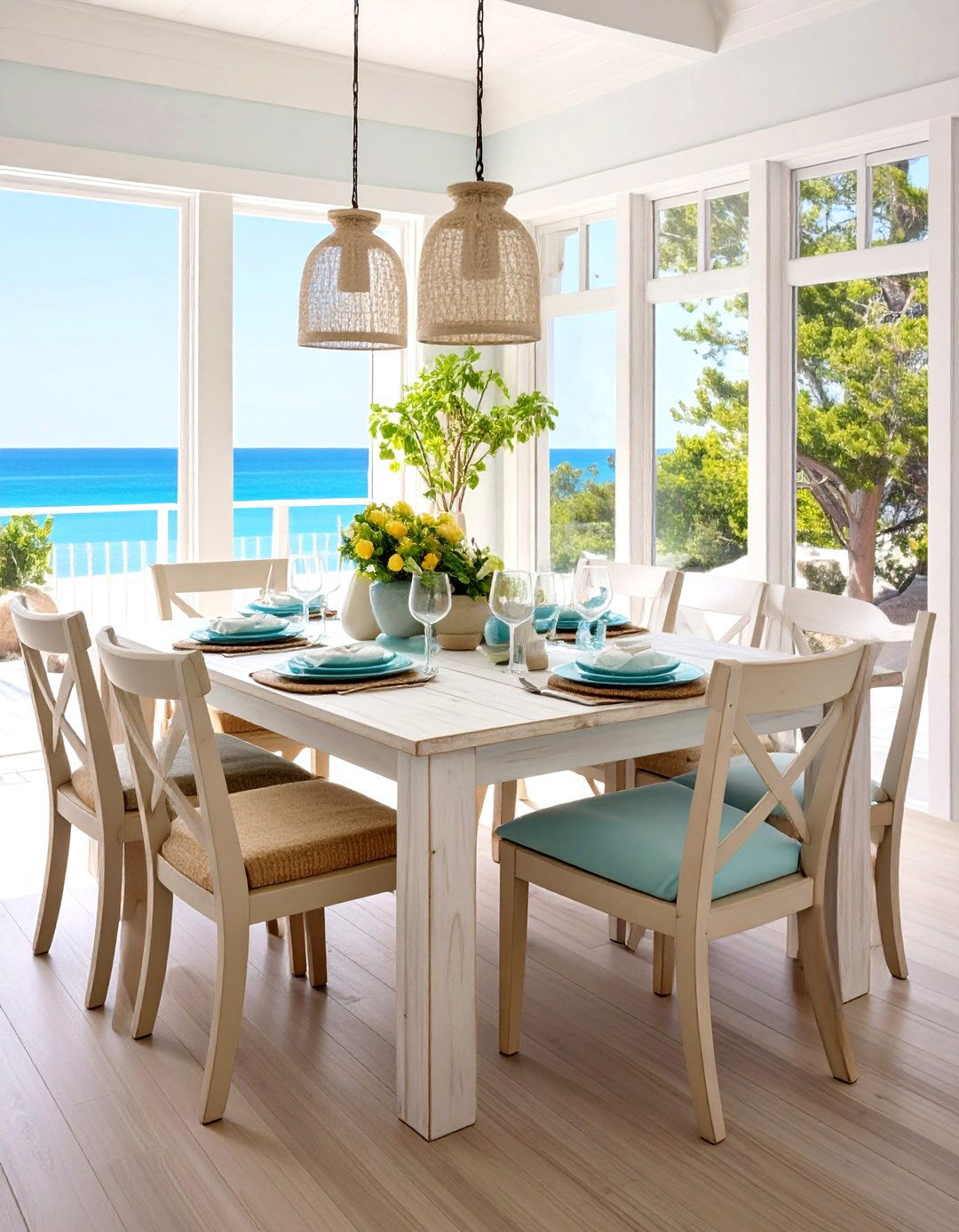
Create breezy, coastal vibes with this light and airy painted furniture technique that allows wood grain to show through delicate color washes. Whitewashing gives furniture a gentle, washed-out appearance using a diluted paint mixture, which is ideal for bringing light and airiness into any space. Mix white paint and water, then brush on a thin layer and wipe back the excess for a breezy, see-through effect that lets the wood grain shine. This painted furniture approach works exceptionally well on pine, oak, and other open-grained woods. The goal is to create a finish that lightened, brightened, and aged the surface while allowing the wood grain to still show through. Perfect for beach houses, cottage style, or any space needing a fresh, clean aesthetic with natural warmth.
11. Hand-Painted Furniture Artistic Designs
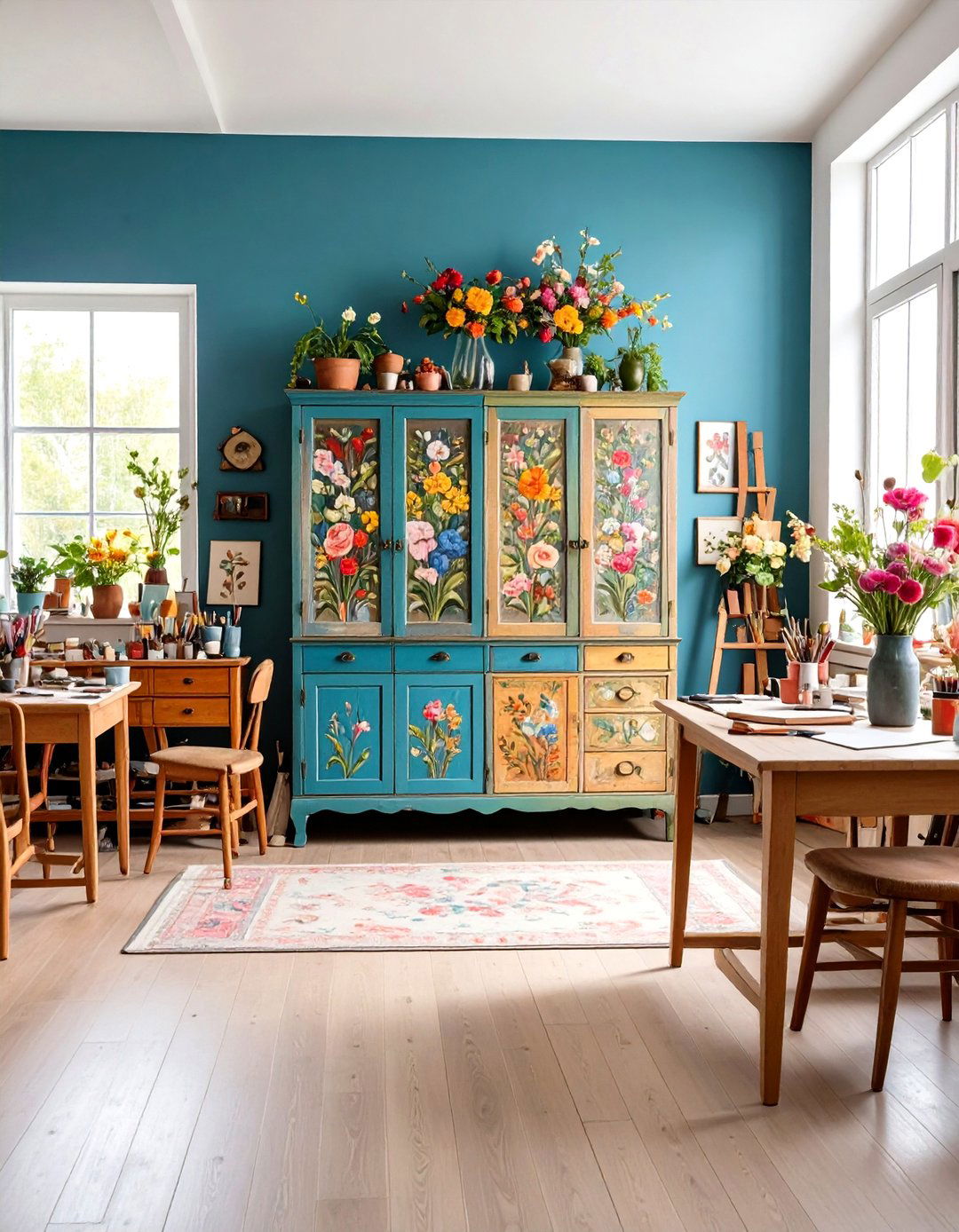
Express creativity through personalized painted furniture featuring custom artwork, florals, or decorative motifs applied by hand. Gen Z and Gen X will hand paint funky murals onto furniture, jazz up that trim and turn grown-up spaces into playful little havens. This painted furniture technique allows complete creative freedom, from delicate botanical illustrations to bold geometric patterns. Vintage armoires become canvas masterpieces when adorned with delicate floral patterns that celebrate craftsmanship and personal creativity. Start with simple designs if you're new to hand-painting, then progress to more complex compositions. For example, you may paint the carvings that are already on Victorian furniture or add small painted flowers by hand. This painted furniture approach transforms ordinary pieces into unique artistic statements that reflect your personality and artistic vision.
12. Antiqued Glazed Painted Furniture Rich Depth
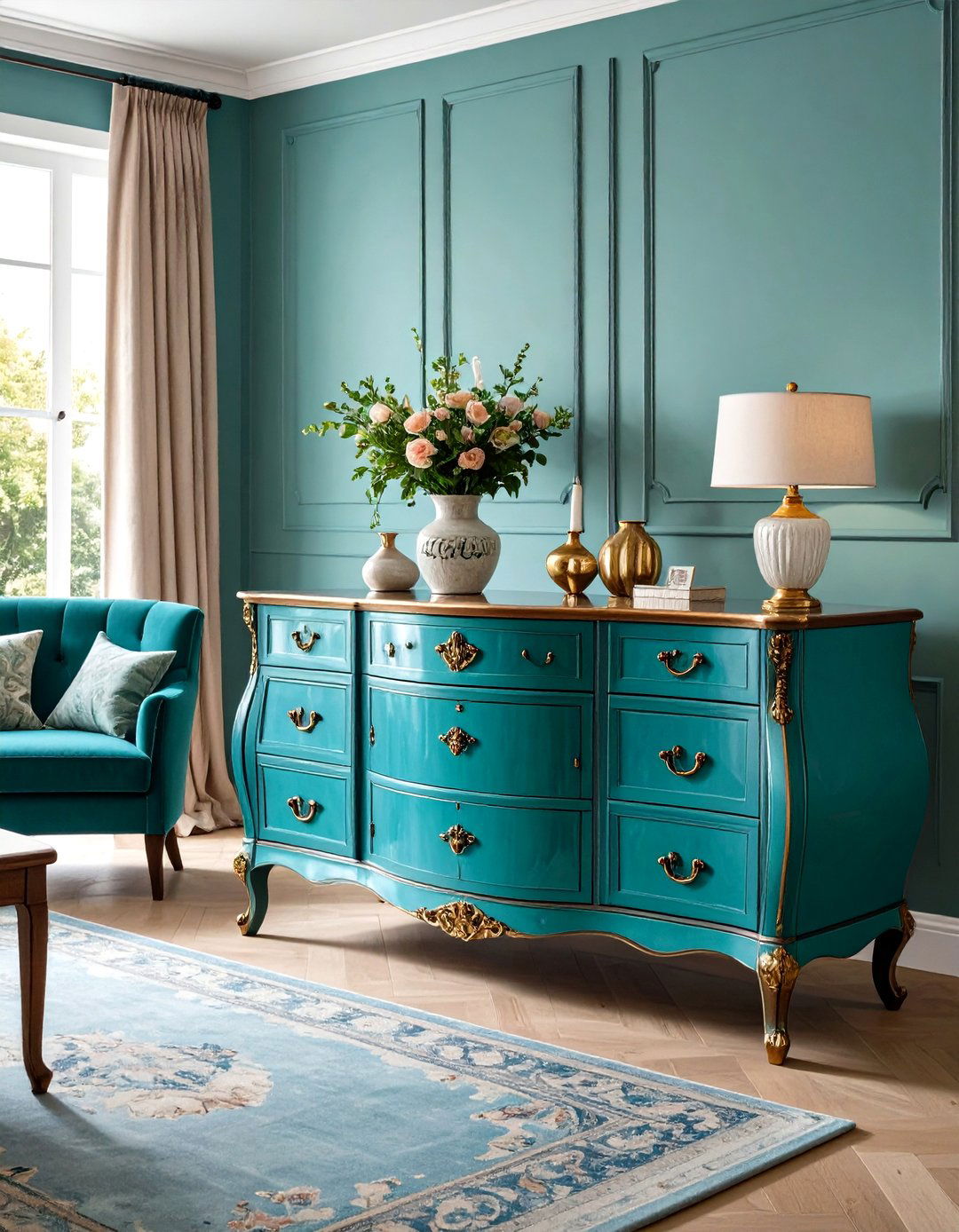
Enhance painted furniture with sophisticated aging effects using translucent glazes that add depth, dimension, and timeless elegance. Unlike solid paint, glaze remains workable longer, allowing you to manipulate it to create shadows, highlights, and aged effects. Brush antiquing glaze over your furniture, then wipe it away, leaving the glaze in carved details and crevices—it adds warmth and shadow, instantly aging your piece. This painted furniture technique works particularly well on pieces with raised details, moldings, or carved elements. Applying glaze can give the furniture an antique patina while enhancing its contours and details with depth and dimension. The result is painted furniture that appears to have been lovingly maintained through generations, with rich color variations and sophisticated aging effects that add character.
13. Dipped Painted Furniture Modern Color Block
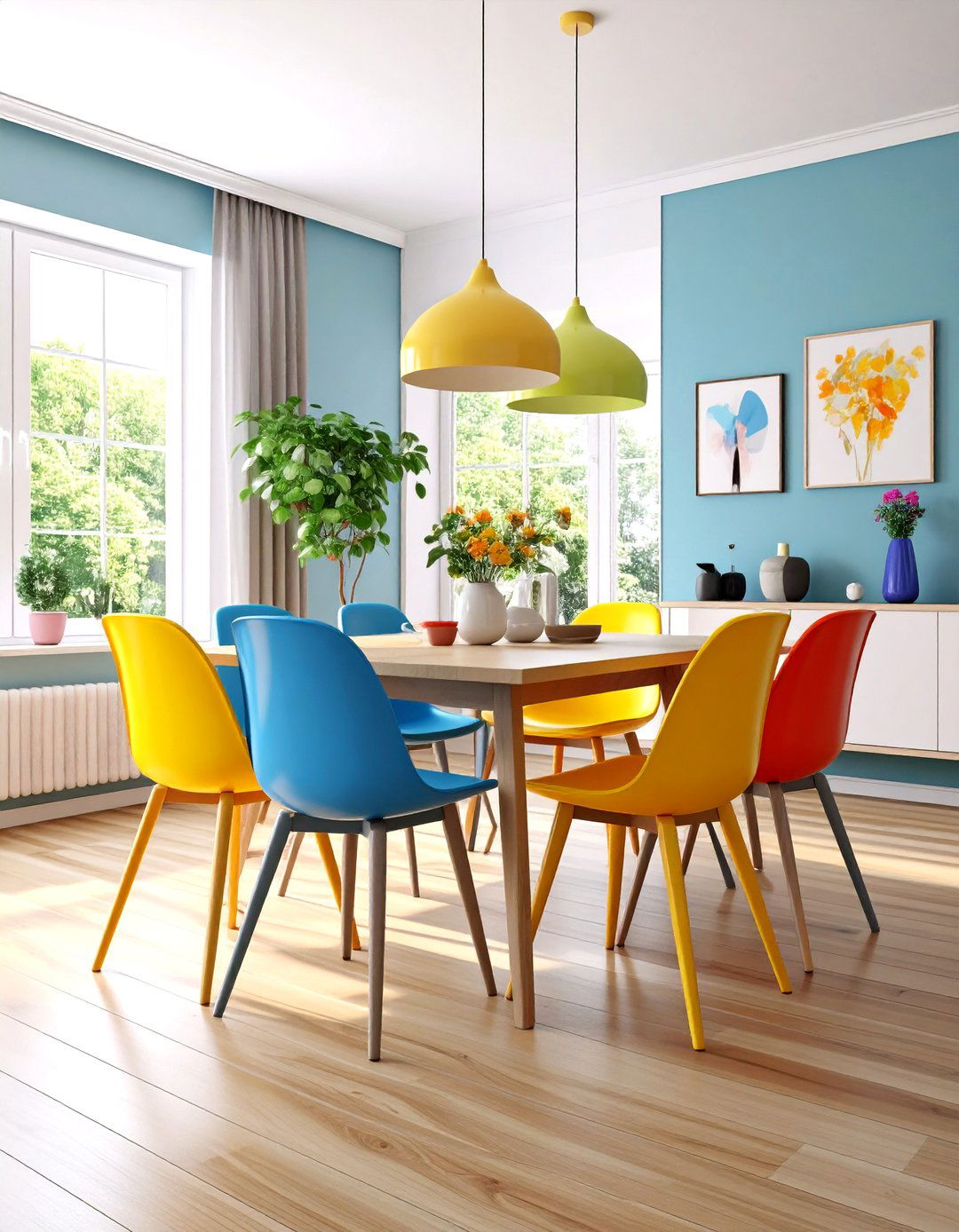
Create contemporary painted furniture with clean lines by "dipping" portions of pieces in contrasting colors for striking modern effects. This technique works well on chairs, stools, and side tables where legs or specific sections can be painted in bold contrasting colors. This painted furniture approach involves carefully masking areas and applying paint to create the illusion that furniture has been dipped in color. Every chair gets its own signature with dip and dye techniques. The method works exceptionally well with neutral base colors and vibrant accent colors, creating furniture that feels fresh and contemporary. Perfect for modern interiors, this painted furniture technique transforms simple pieces into designer-quality statements that serve as functional art while maintaining clean, minimalist aesthetics.
14. Layered Painted Furniture Complex Character
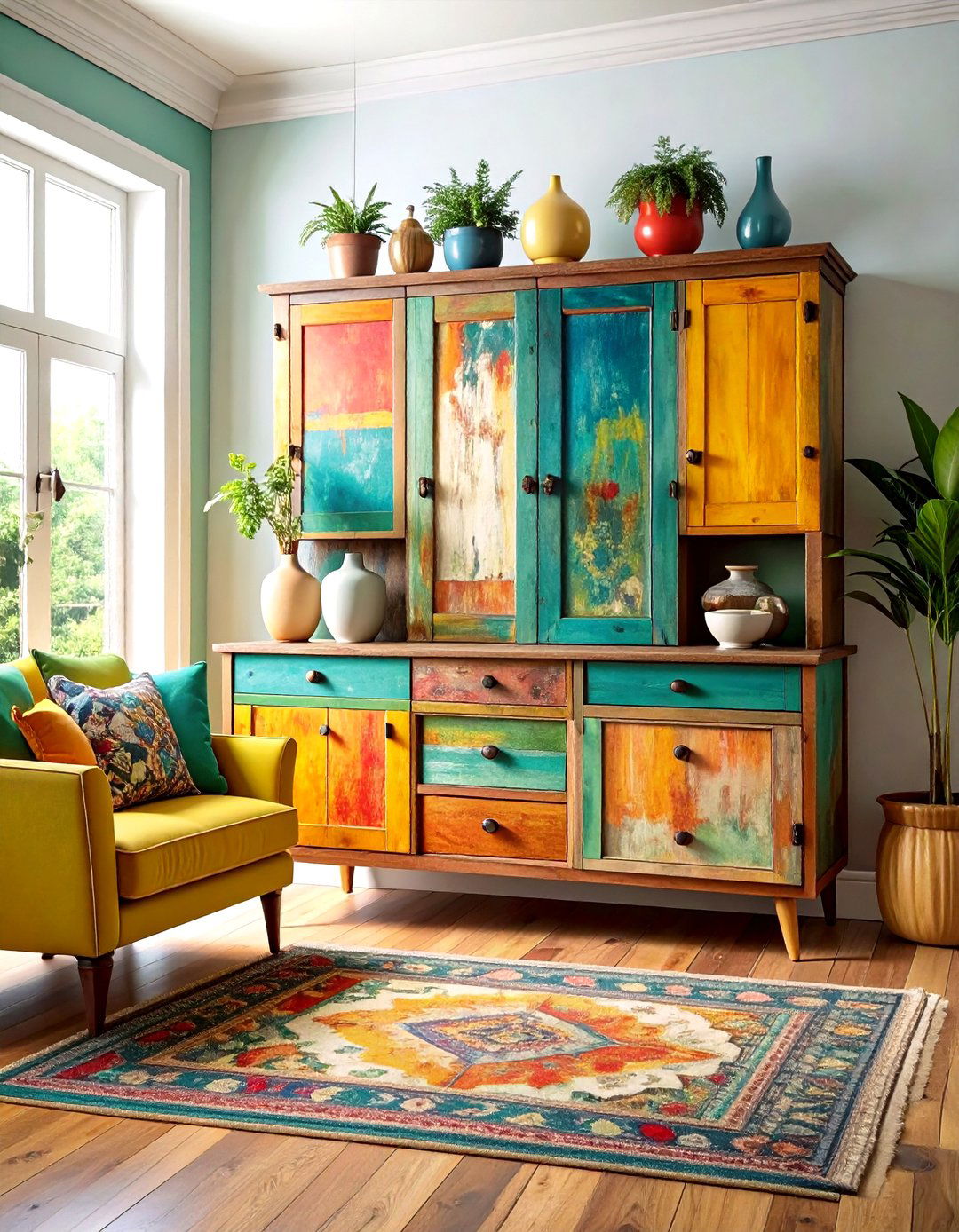
Build rich visual interest through this sophisticated painted furniture technique that applies multiple paint colors in strategic layers for complex, nuanced finishes. You can layer multiple colors of paint—start with your base coat, apply a second color as your first top coat, and then add a third color, distressing each layer lightly. Layering paint colors and sanding between coats creates beautiful depth and texture. This painted furniture method requires patience but produces stunning results that suggest decades of paint applications. This technique can create a richly variegated look, suggesting multiple layers of paint applied over decades. Each revealed layer tells part of the furniture's story, creating pieces with incredible depth and visual complexity that serve as conversation starters and artistic focal points in any room.
15. Color-Washed Painted Furniture Soft Transparency
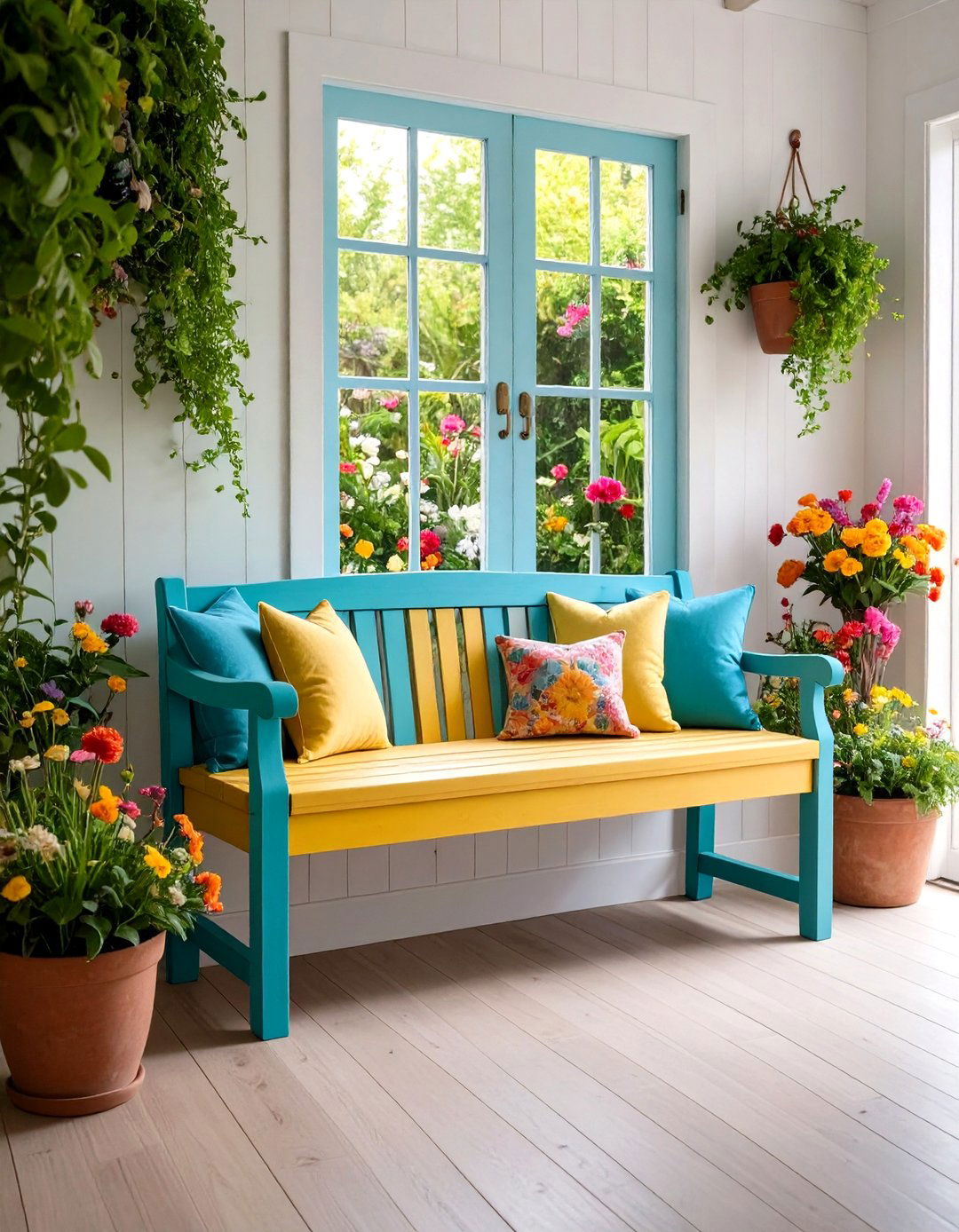
Achieve gentle, translucent effects with this delicate painted furniture technique that creates soft color variations without hiding natural wood characteristics. Color washing creates soft, layered color without hiding the wood underneath. For a stunning ombré color wash, gradually adjust your paint mixture as you work across the surface, progressively diluting the mixture for seamless transitions. This painted furniture approach involves applying thinned paint in subtle layers, allowing previous coats to show through. The technique works beautifully on pieces where you want to add color while maintaining the natural beauty of wood grain. Limewash is often used on walls, but it can also give furniture the appearance of naturally aged discolouration. The result is painted furniture with ethereal, watercolor-like effects that add sophistication without overwhelming spaces.
16. Gilded Painted Furniture Luxurious Highlights
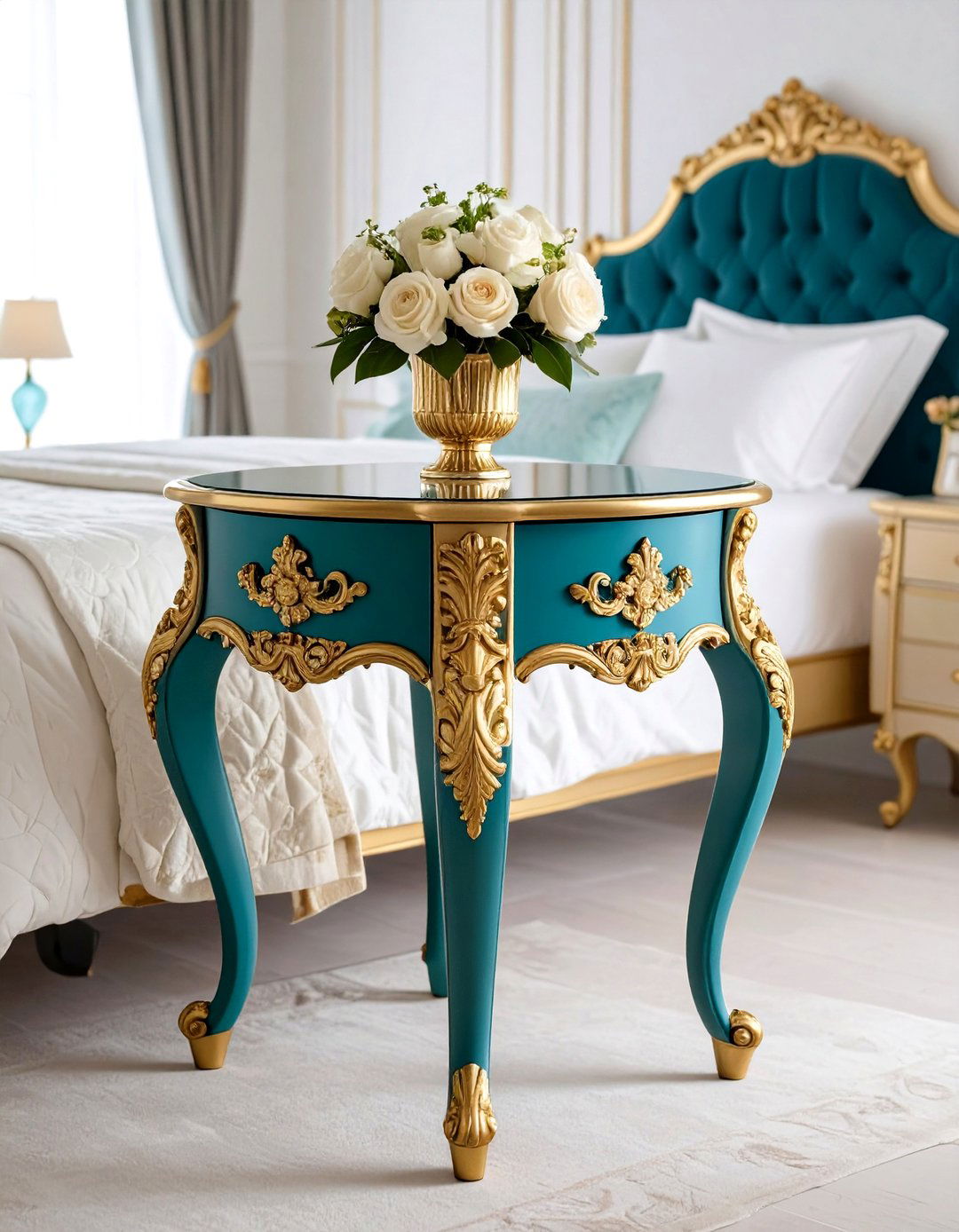
Add opulent touches to painted furniture using gold leaf, metallic wax, or gilding techniques that create stunning focal points with vintage glamour. Apply metallic leaf or gilding wax to edges and details, then tone it down with a patina glaze for a piece that looks like it's been around for generations. This painted furniture technique works exceptionally well on ornate pieces, picture frames, or furniture with carved details. You can use a dab of gold metallic paint to add a bit of shimmer to worn-out vintage hardware, as both Gold and Bronze Metallic work well for this purpose. The key is restraint—strategic application of gilding creates elegant accents without overwhelming the piece. This painted furniture approach transforms ordinary items into treasured heirloom-quality pieces that command attention and add sophisticated glamour to any interior design scheme.
17. Dry-Brushed Painted Furniture Subtle Texture
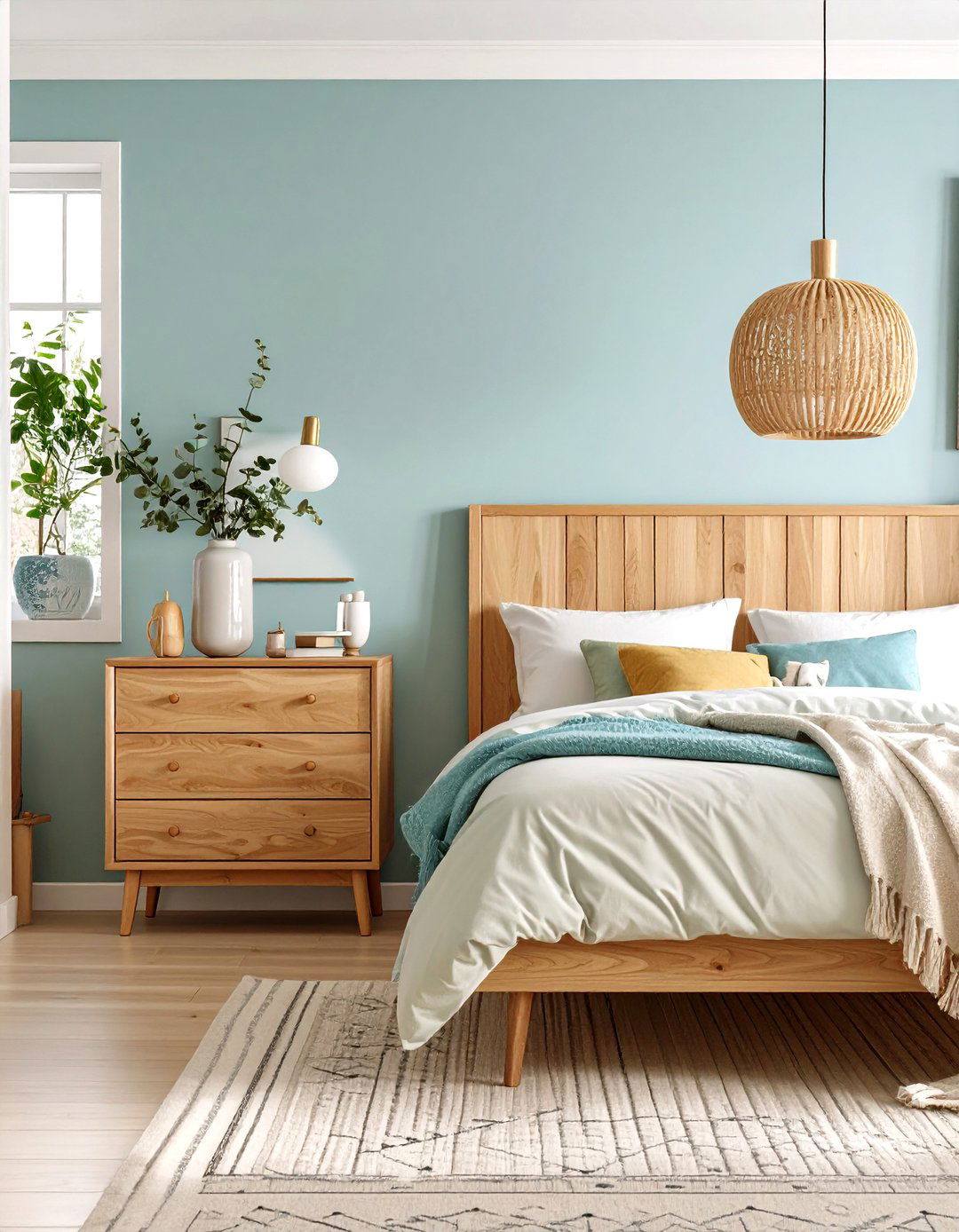
Master this simple painted furniture technique that creates soft, streaky highlights while allowing underlying surfaces to show through for natural, weathered effects. Lightly dip the tips of your brush in paint, then dab off the extra and sweep it across your furniture to add soft, streaky highlights that show off the texture underneath. This painted furniture method requires minimal paint and creates maximum impact through strategic application. This look was achieved by dry-brushing the product onto the surface, working quickly by lightly brushing against the grain, then feathering the glaze in the direction of the grain. The technique works particularly well for adding highlights to carved details or creating subtle color variations on flat surfaces. This painted furniture approach is perfect for beginners because mistakes are easily corrected, and the forgiving nature creates beautiful, organic-looking results.
18. Chippy Painted Furniture Farmhouse Character
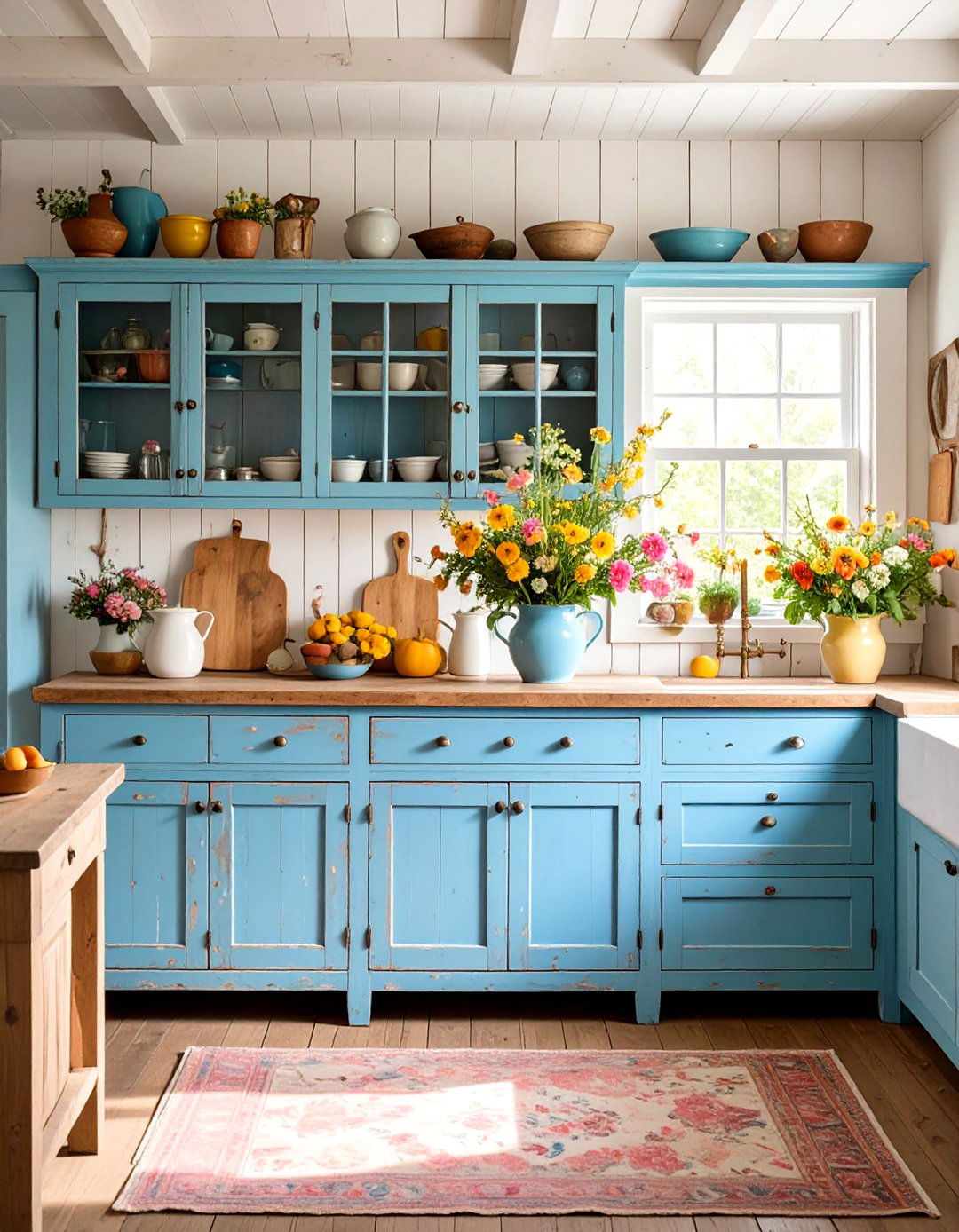
Create authentic farmhouse appeal with this charming painted furniture technique that produces perfectly imperfect paint chips and worn areas. Rub wax or petroleum jelly on areas where you want paint to resist, then paint over the whole piece and scrape away the top layer where you applied wax. This painted furniture method mimics natural wear patterns that occur over decades of use. The technique works exceptionally well on pieces that would naturally show wear—chair rails, drawer edges, and cabinet doors. You can distress your chalk painted furniture with a putty knife to achieve lots of chippy layers when doing it over multiple layers of paint. This painted furniture approach creates the coveted "perfectly imperfect" aesthetic that's essential to authentic farmhouse style, adding instant character and story to any piece.
19. Tea-Stained Painted Furniture Natural Aging
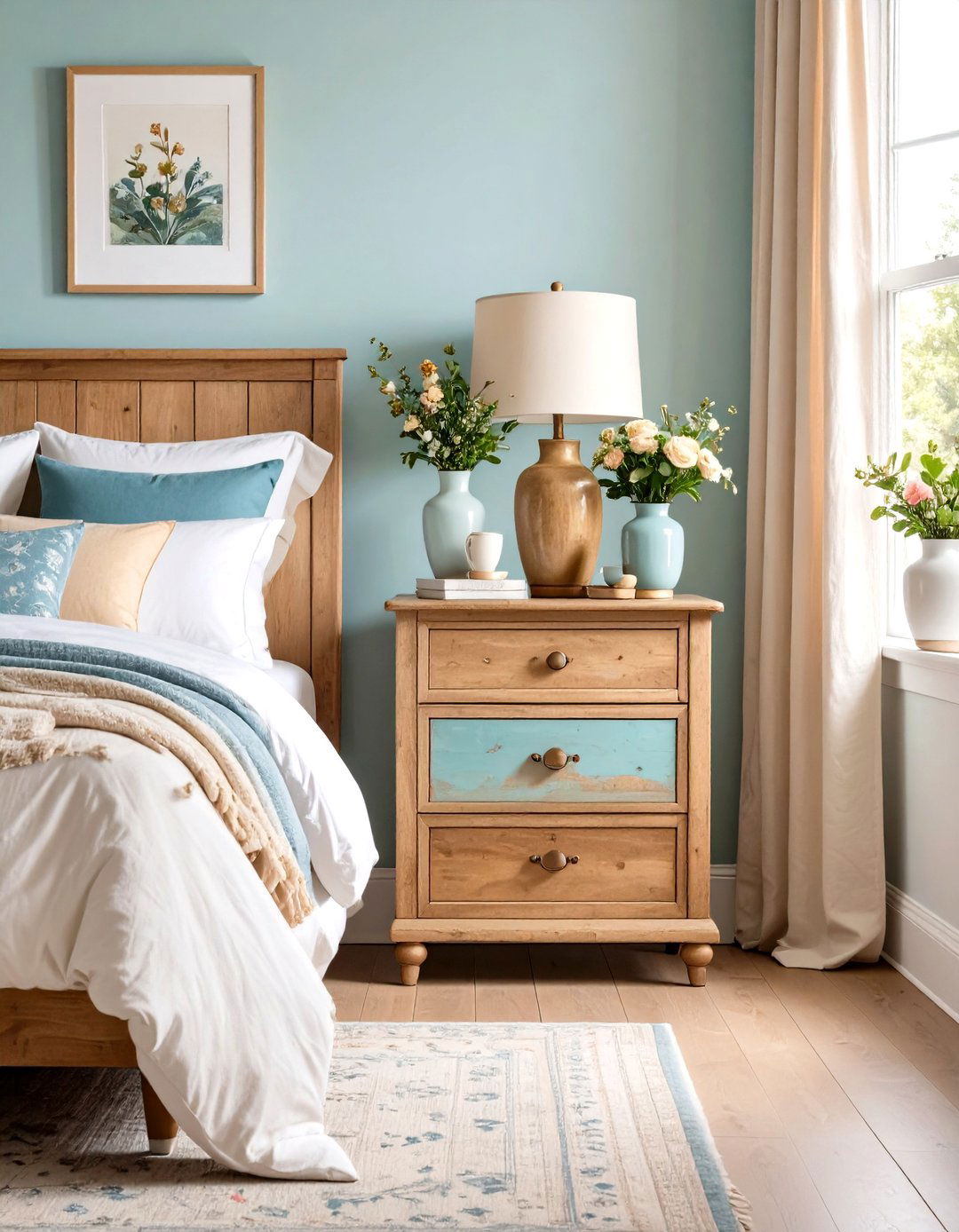
Discover this gentle painted furniture technique using natural tea stains to create warm, mellow tones that suggest decades of loving use and natural aging. Brew a strong cup of tea, brush it onto your wood, and let it soak in—the color builds with each coat, giving your piece a gentle, aged glow without harsh chemicals. This painted furniture method works particularly well on raw wood or lightly painted surfaces where you want subtle color enhancement. The technique is completely natural and eco-friendly, making it perfect for nurseries or homes with chemical sensitivities. Tea staining is a simple, natural way to give raw wood a warm, mellow tone. This painted furniture approach creates subtle, organic color variations that feel authentic and timeless, perfect for country, cottage, or rustic interior styles that celebrate natural materials and gentle aging processes.
20. Burnished Painted Furniture Smooth Elegance
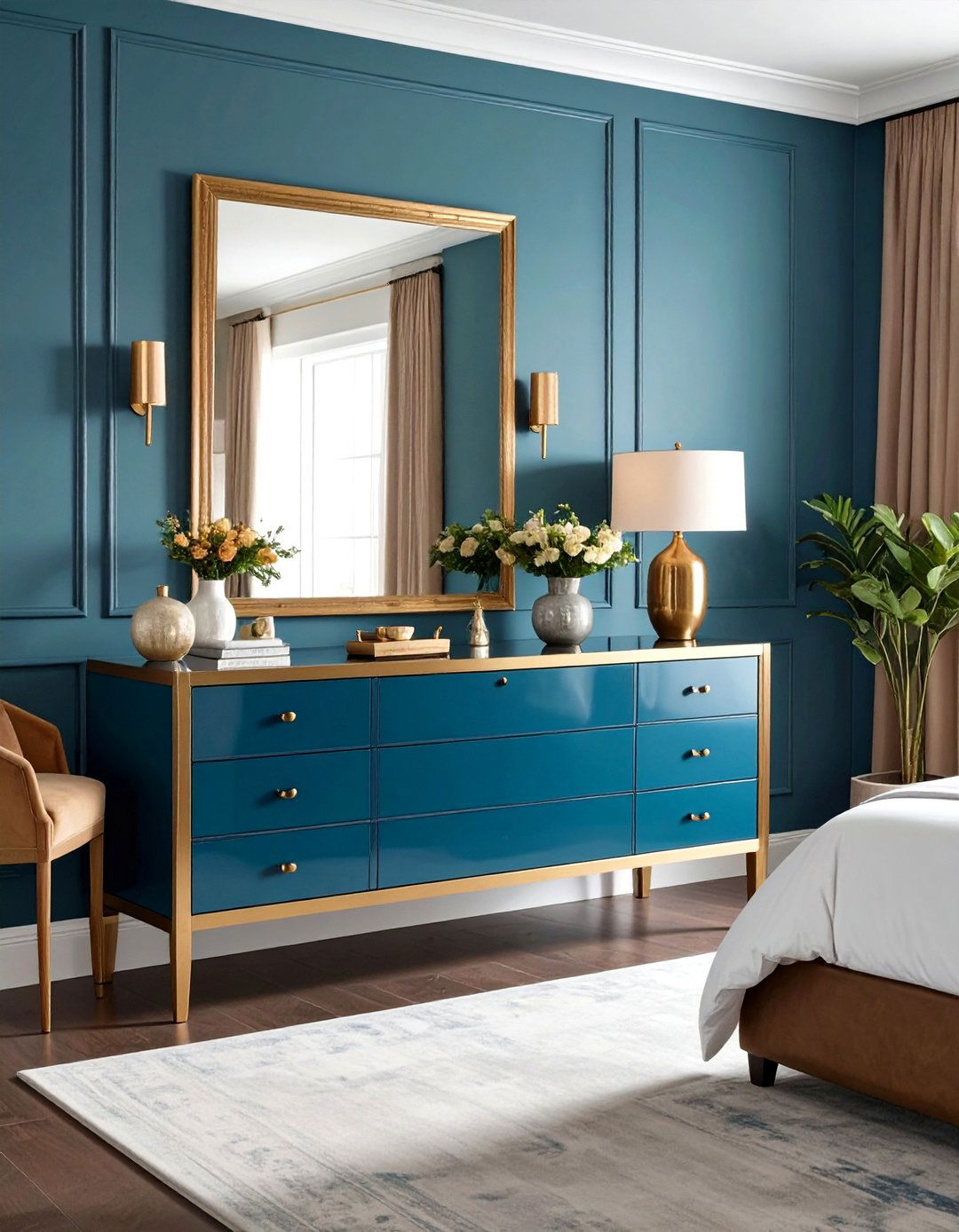
Perfect painted furniture finishes with this professional technique that creates smooth, polished surfaces with subtle sheens reminiscent of well-loved antiques. After painting and distressing, rub the surface with fine steel wool or a soft cloth to smooth everything out and add a subtle, timeworn sheen. This painted furniture method serves as the perfect finishing touch that unifies all previous painting steps. The burnishing process removes slight imperfections while creating a tactile quality that invites touch. Consider using dark wax to add depth and dimension to your piece, applying it sparingly over the painted surface and wiping away excess with a clean cloth. This painted furniture technique transforms ordinary pieces into sophisticated furniture that feels expensive and professionally finished, adding the final layer of authenticity that separates amateur projects from professional-quality painted furniture transformations.
Conclusion:
These twenty painted furniture ideas offer endless possibilities for transforming ordinary pieces into extraordinary statement items that reflect current trends and personal style. With soft neutrals dominating 2025 trends and hand-painted furniture experiencing significant popularity increases, there's never been a better time to explore these creative techniques. Whether you choose classic chalk paint for its forgiving nature, sophisticated layering for complex character, or natural tea staining for gentle aging, each method provides unique opportunities to create custom furniture that perfectly suits your space and budget while developing valuable skills for future projects.




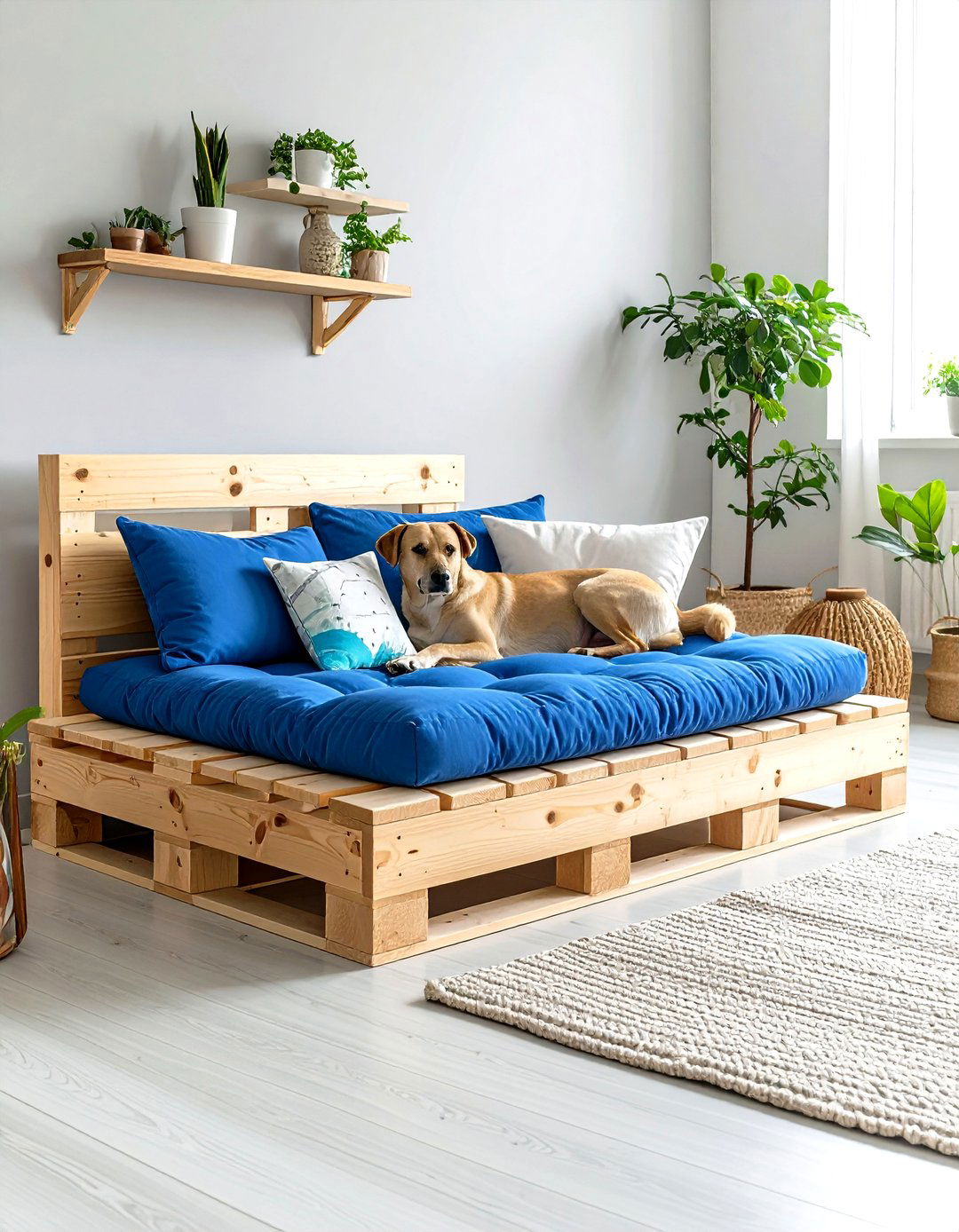
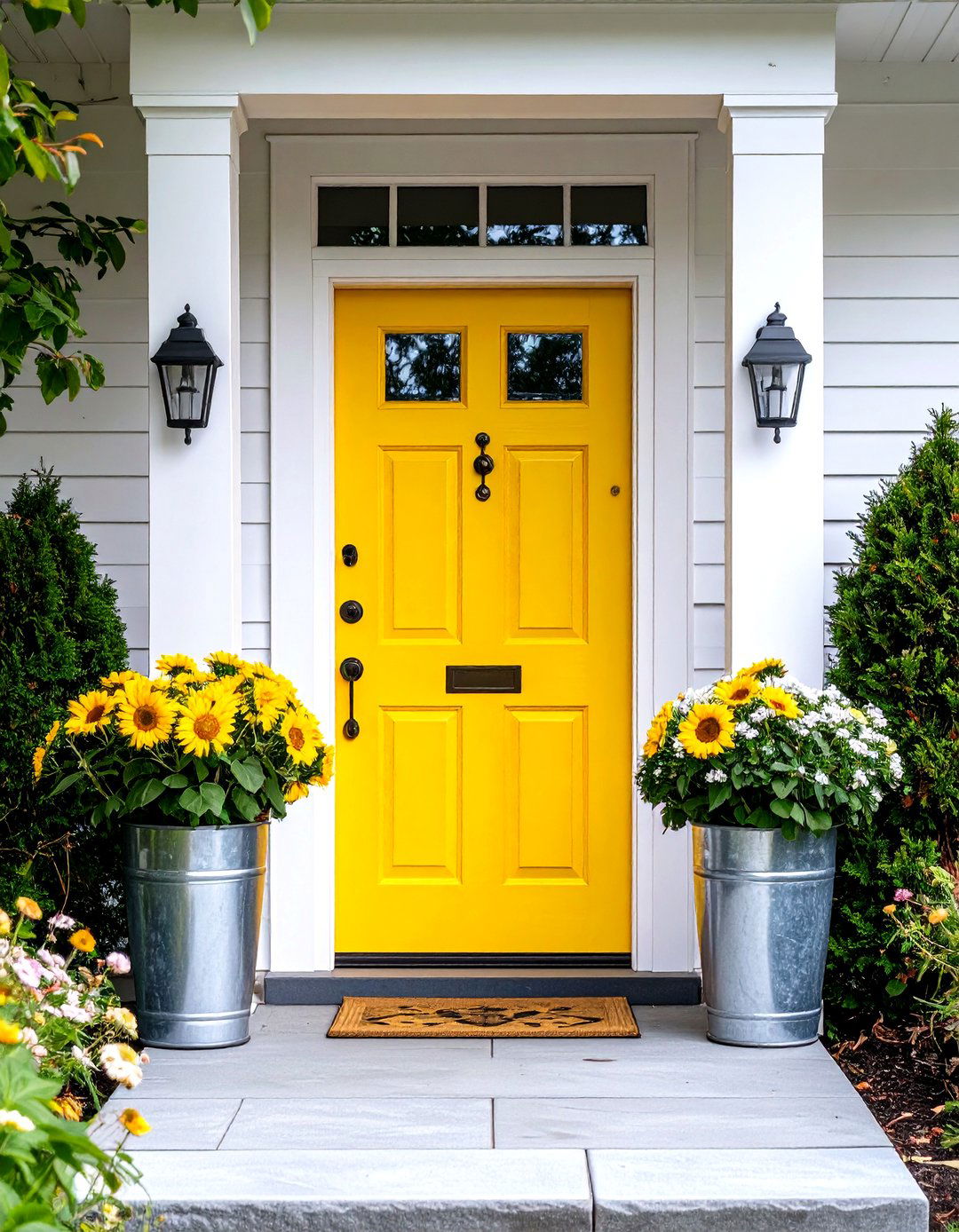
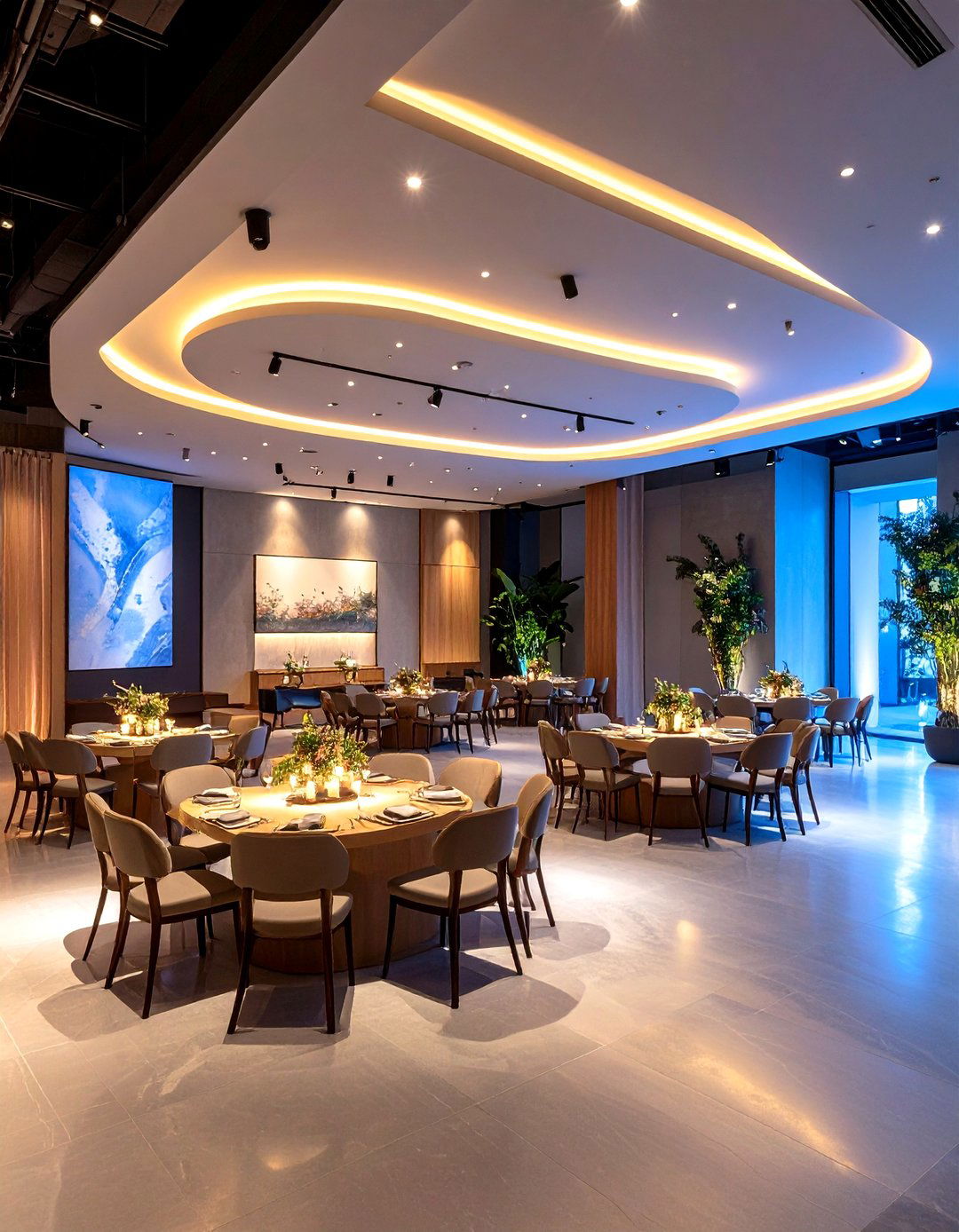
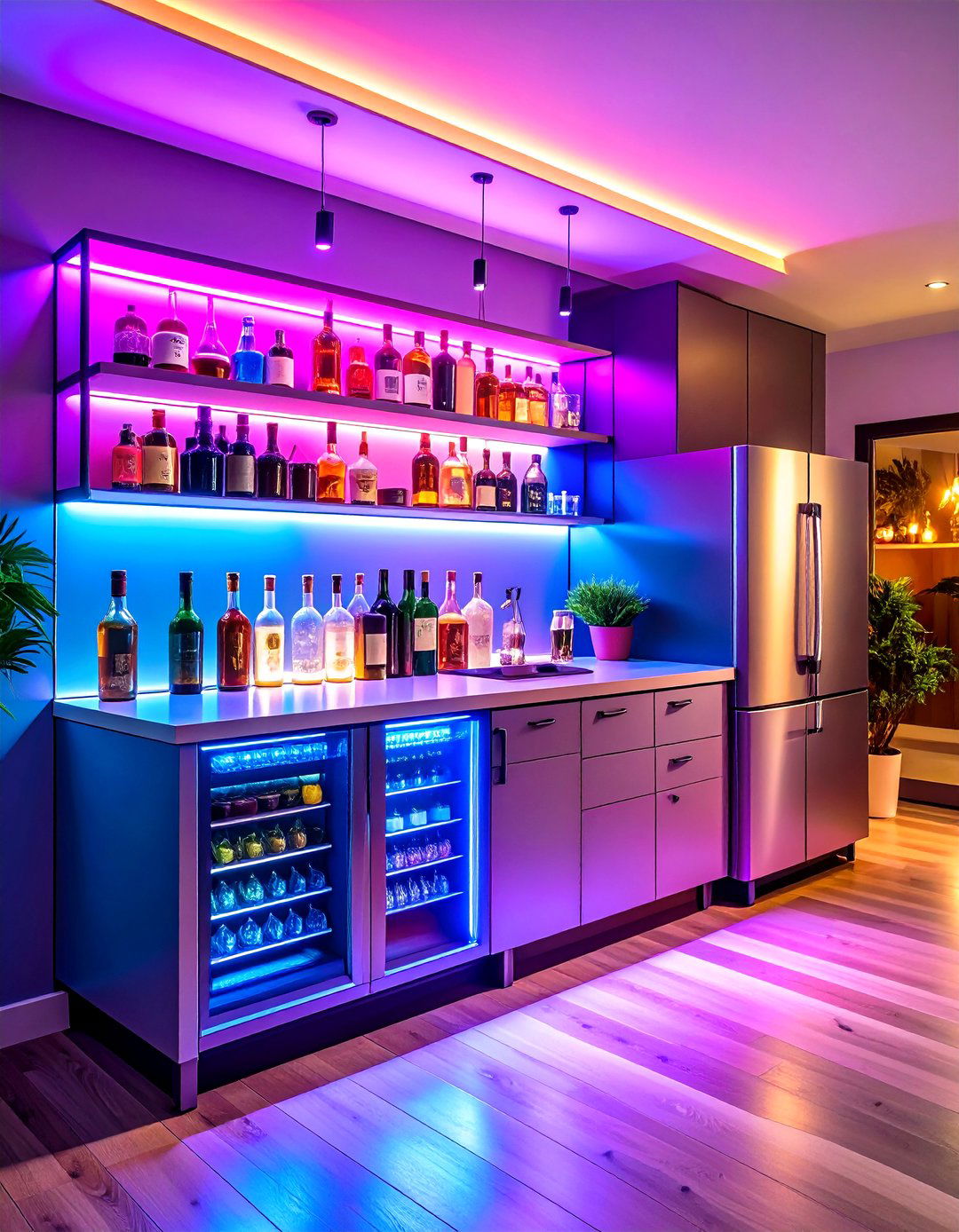

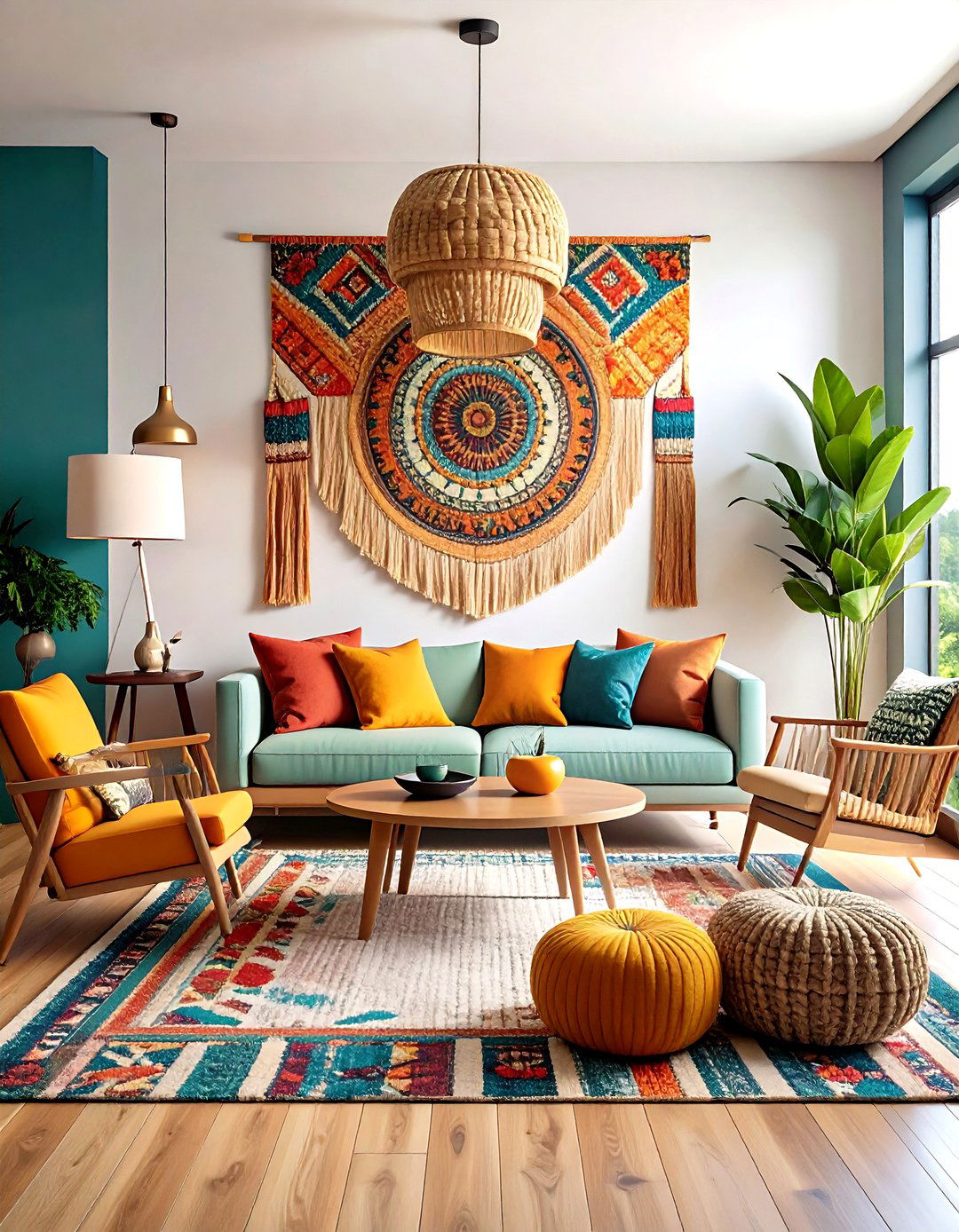
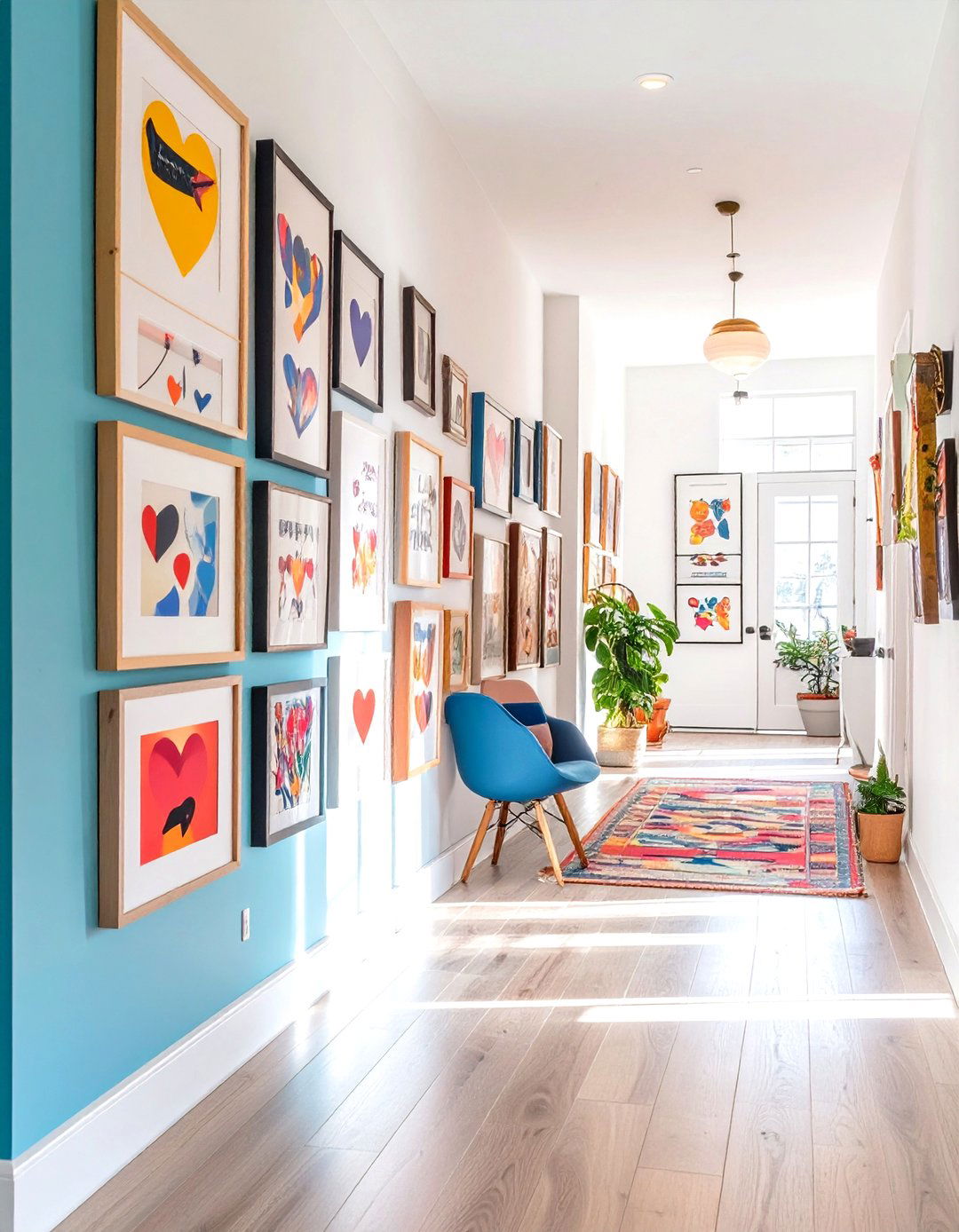
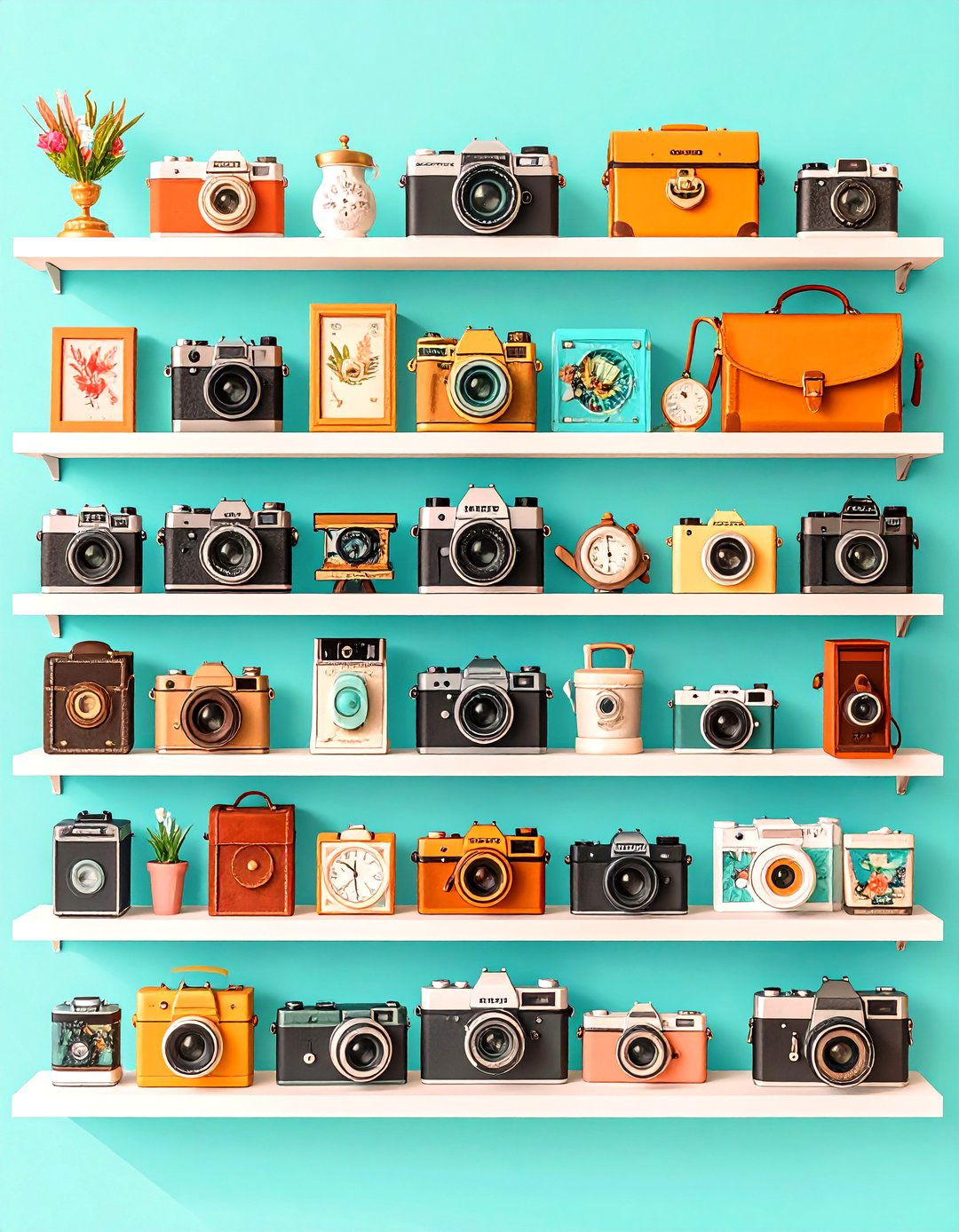
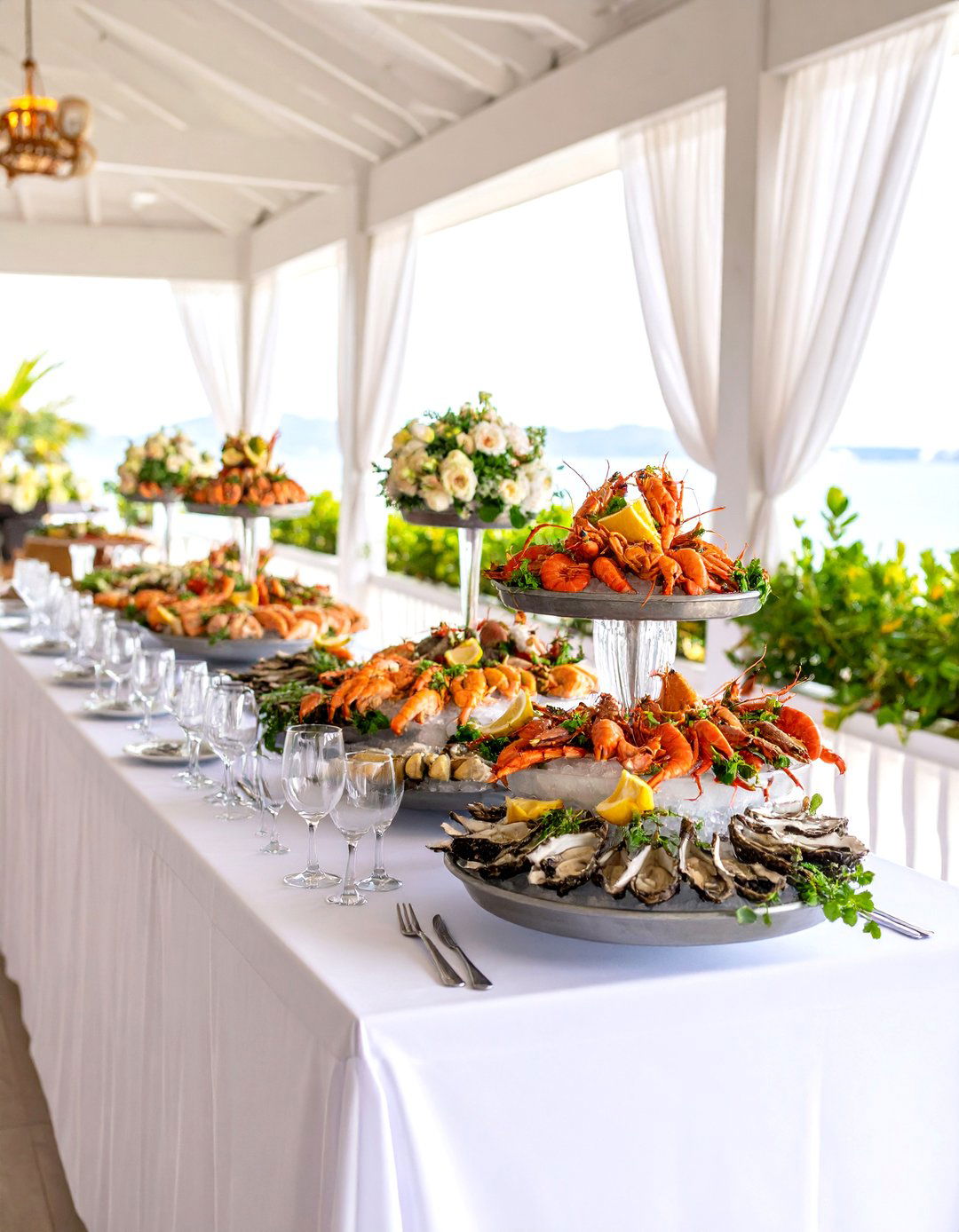
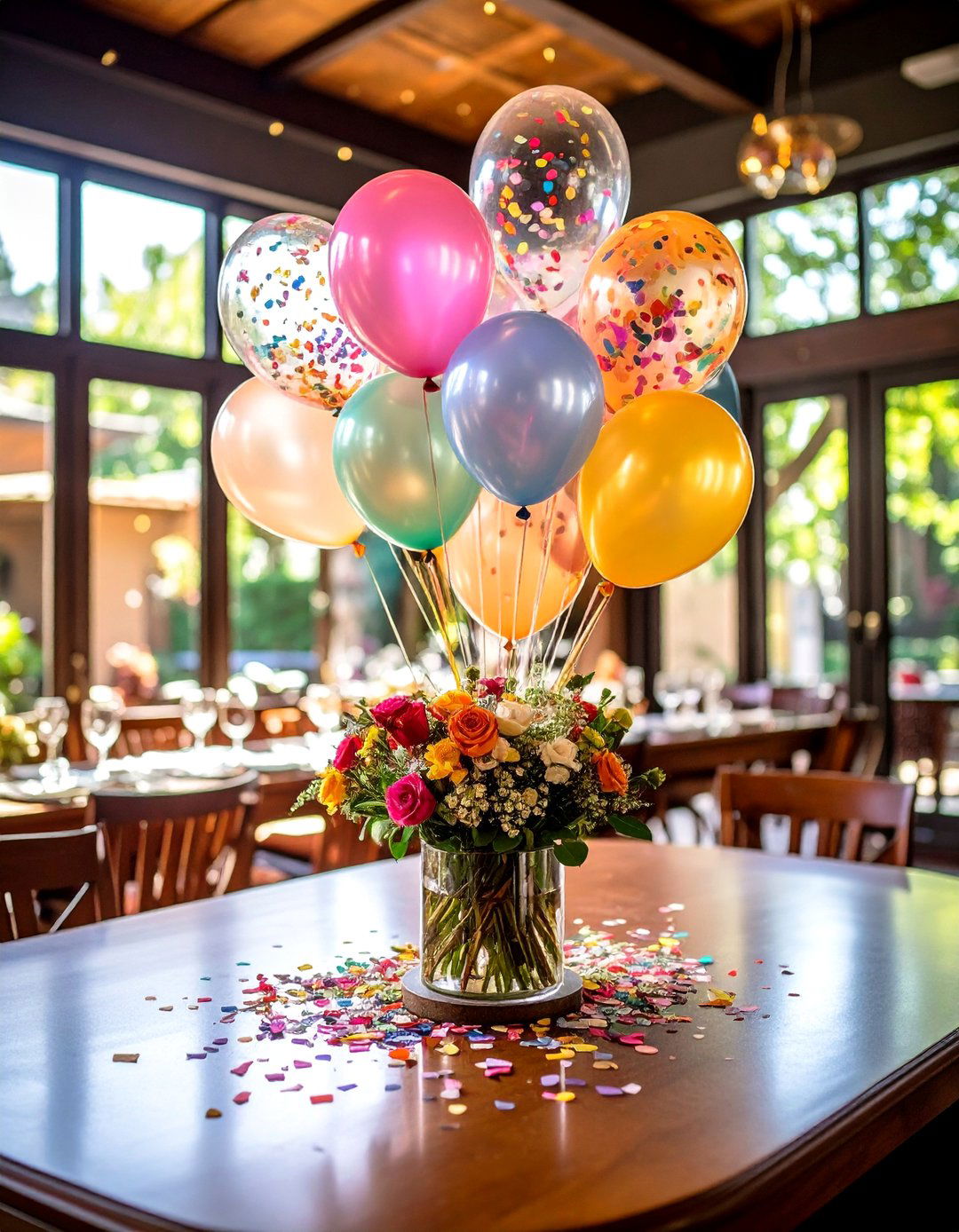
Leave a Reply